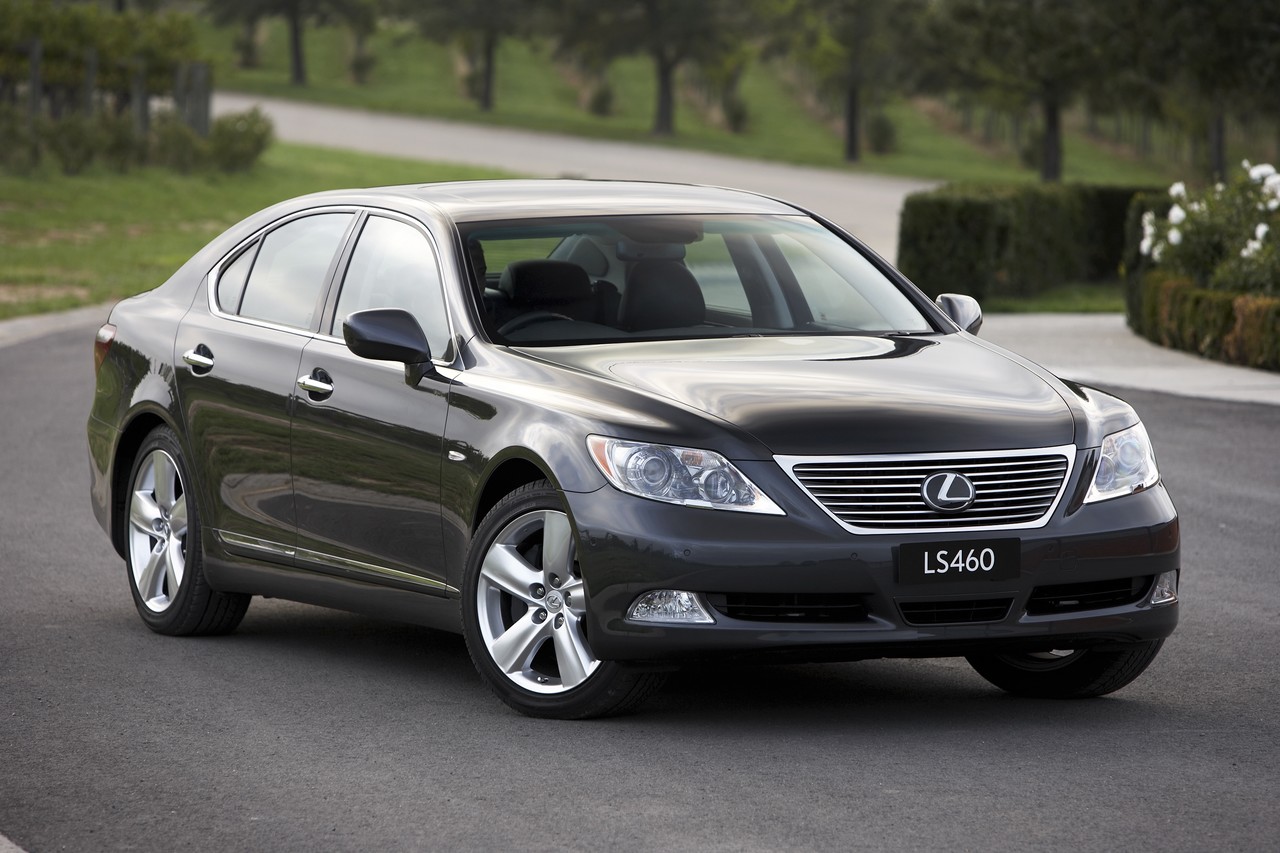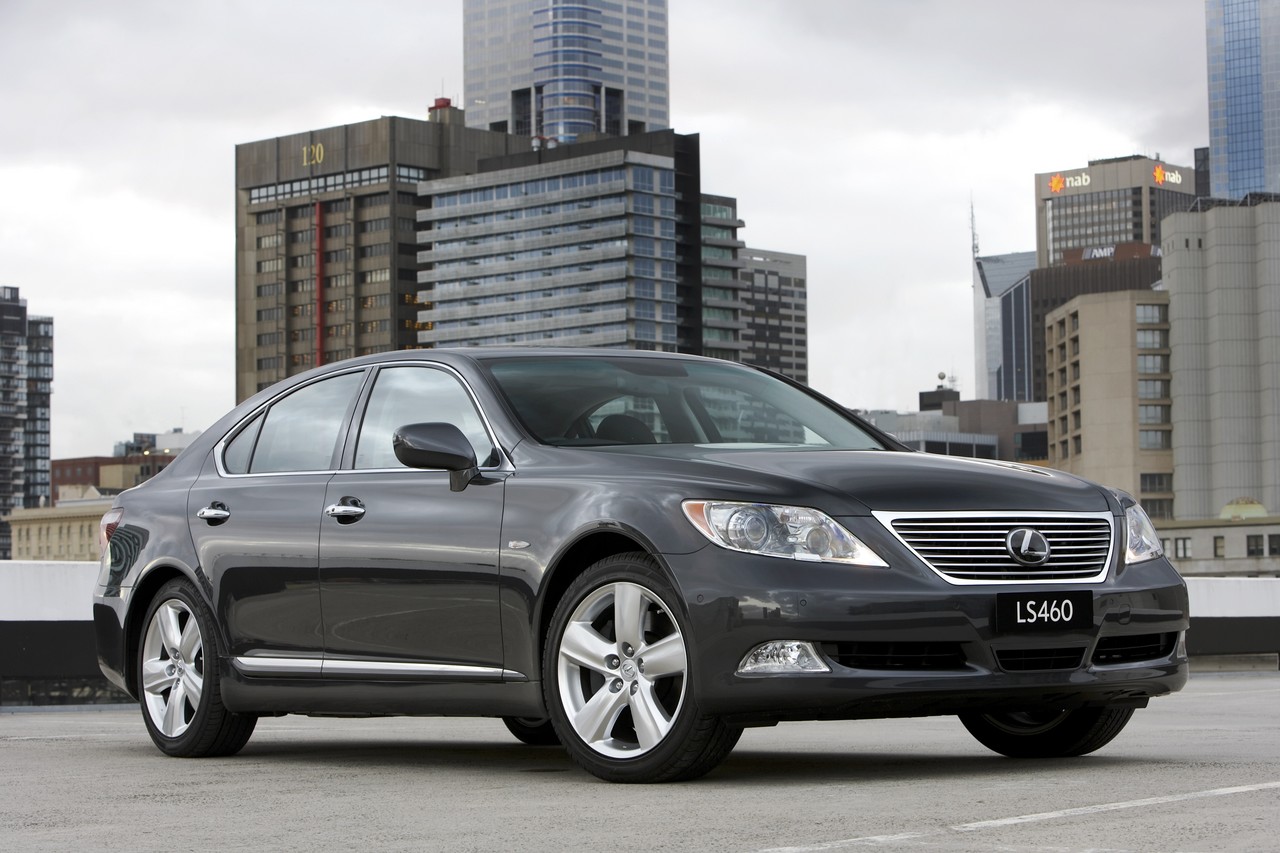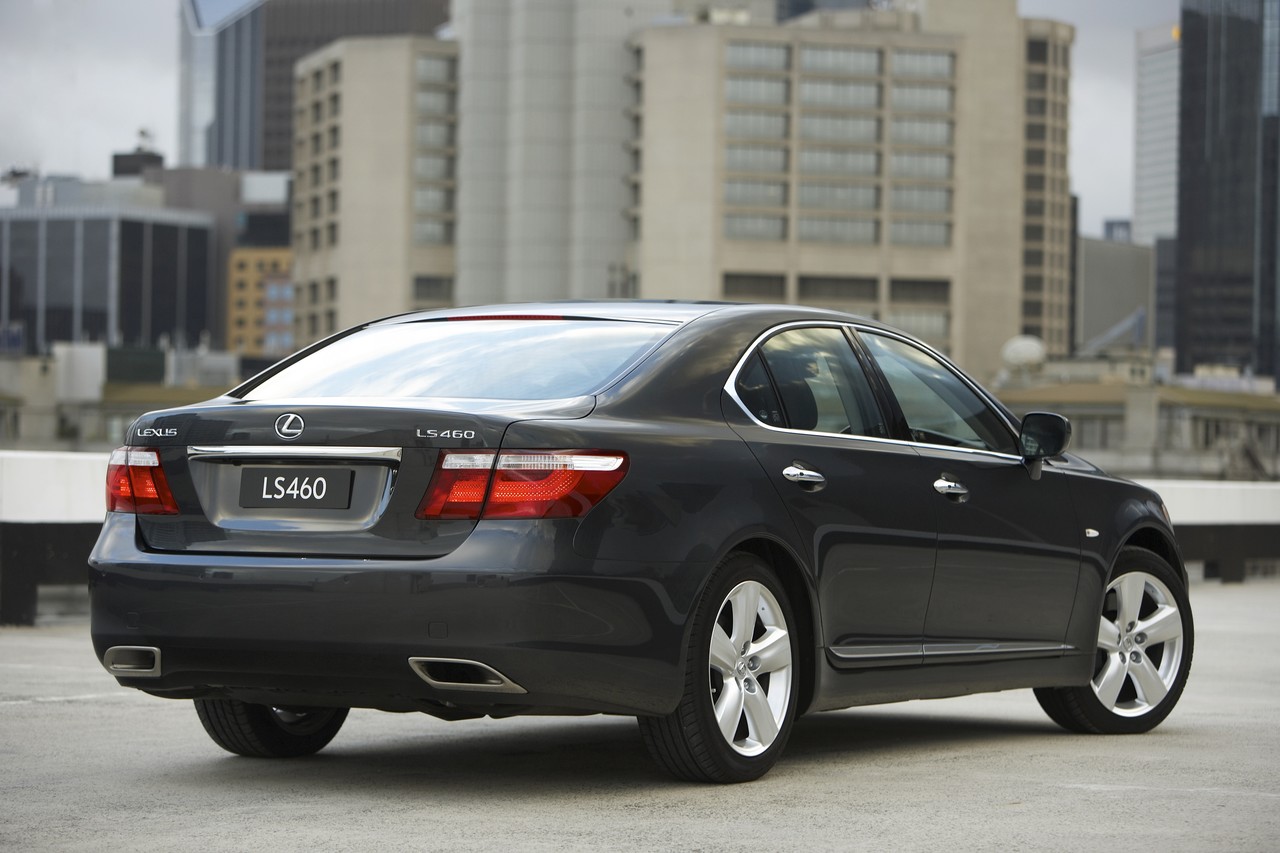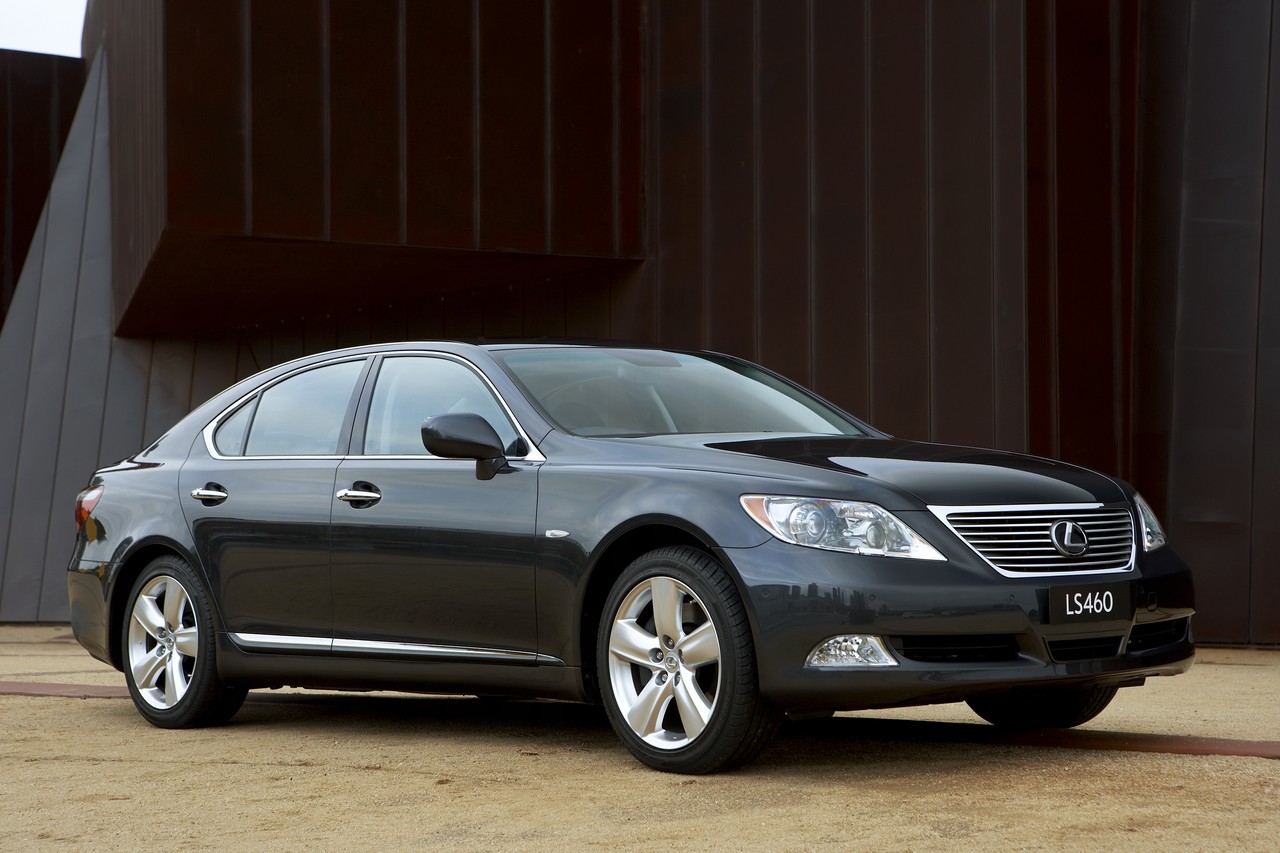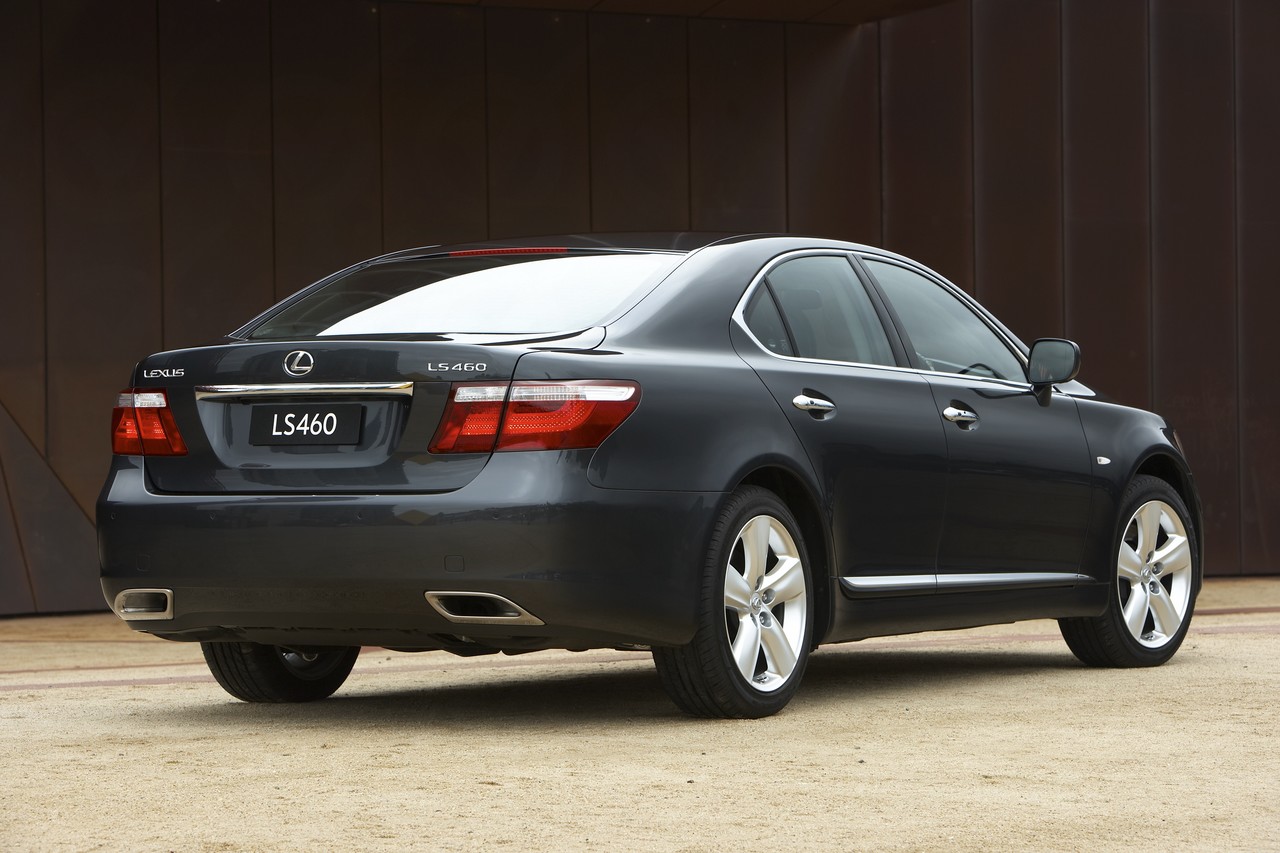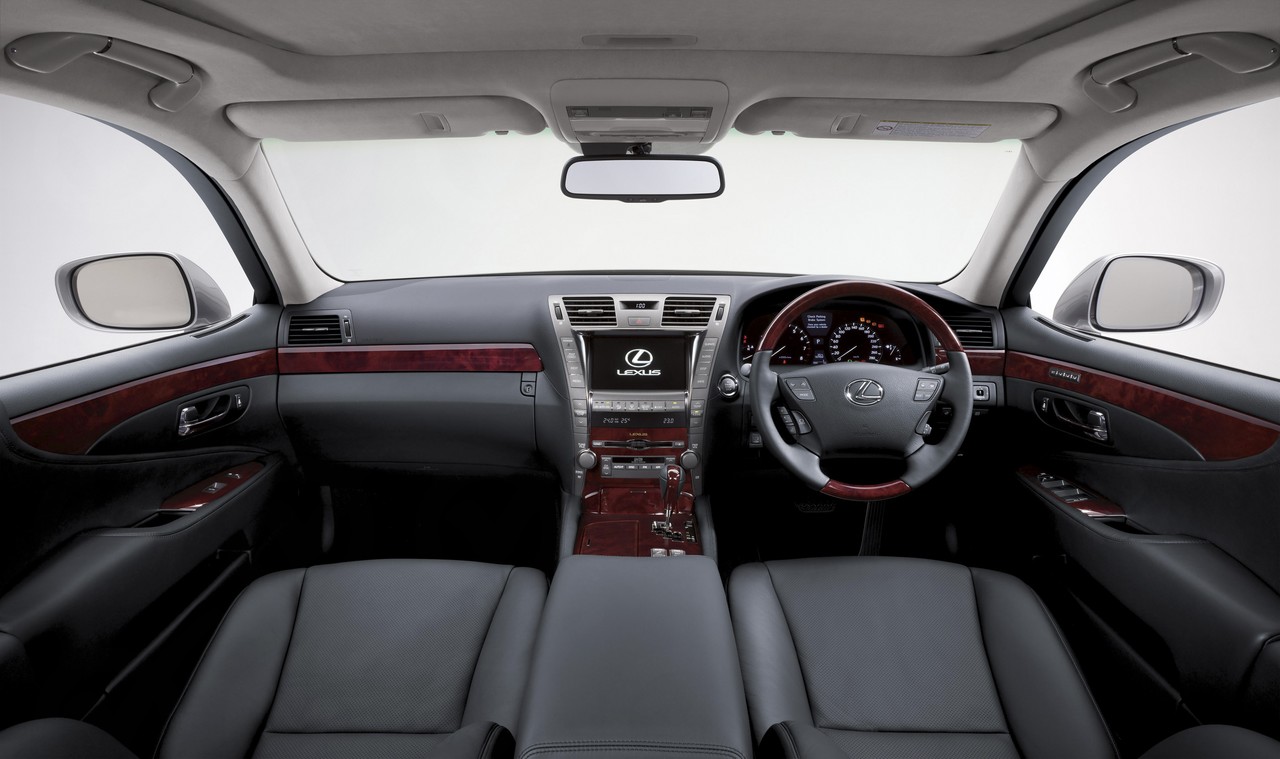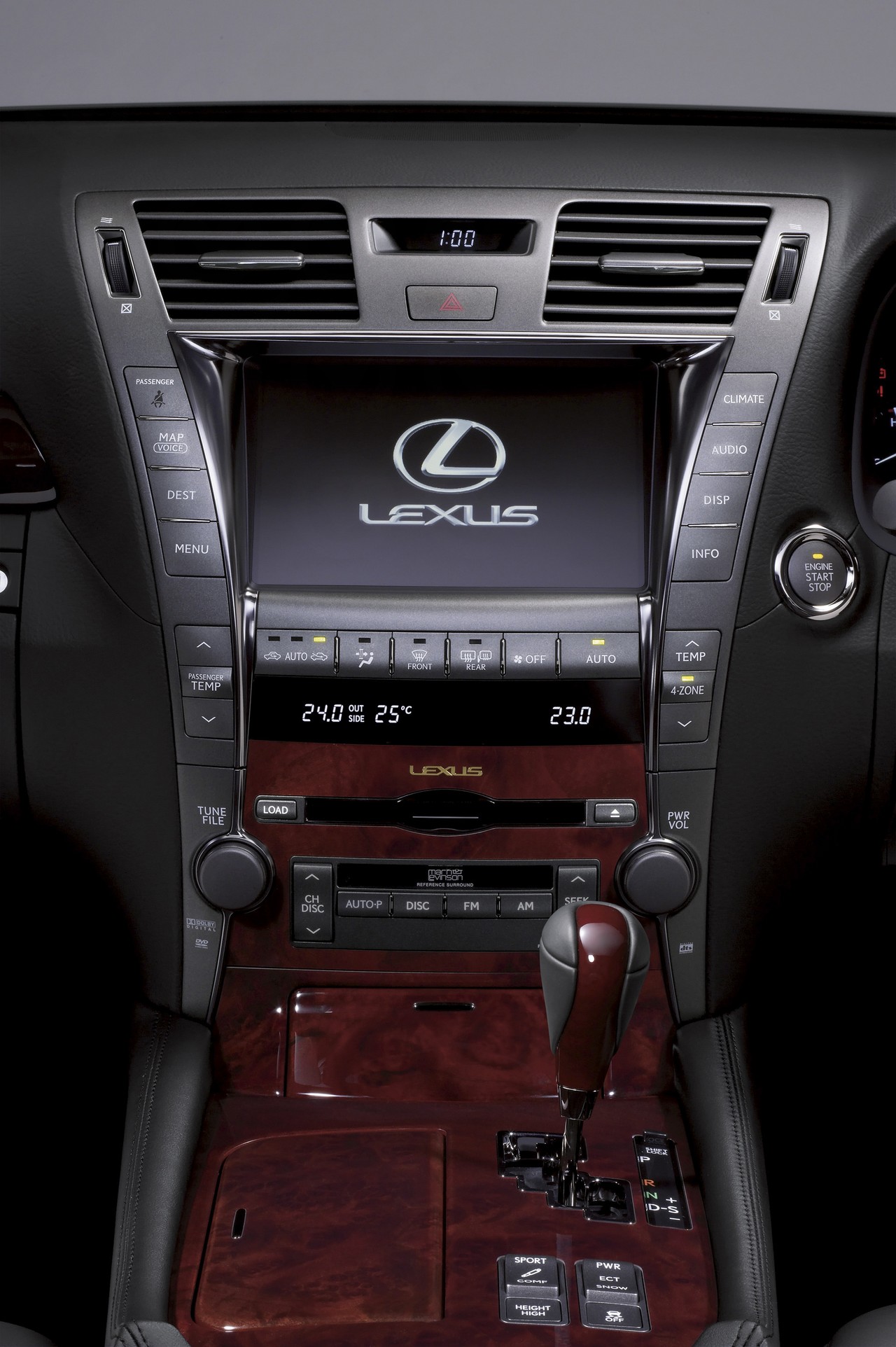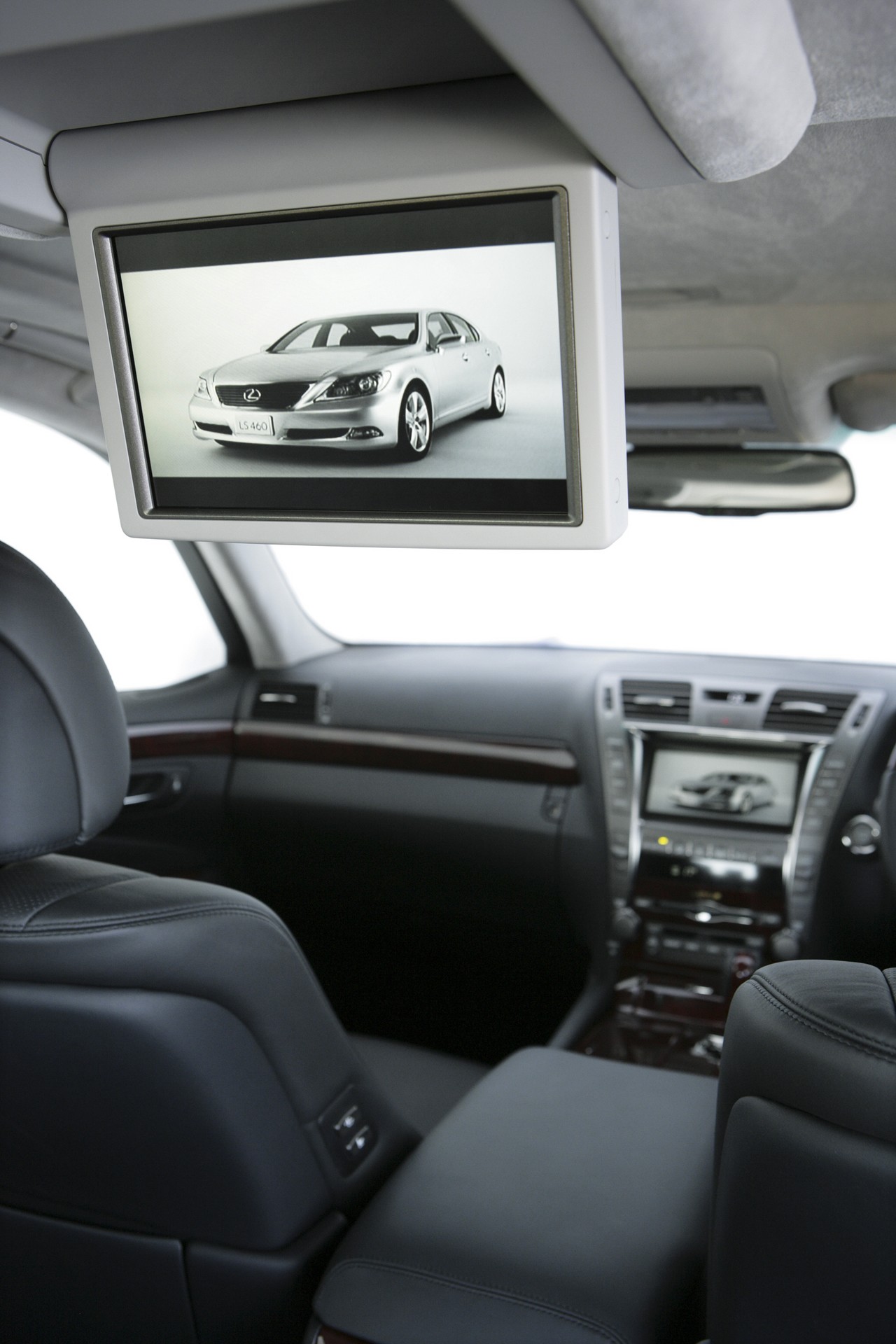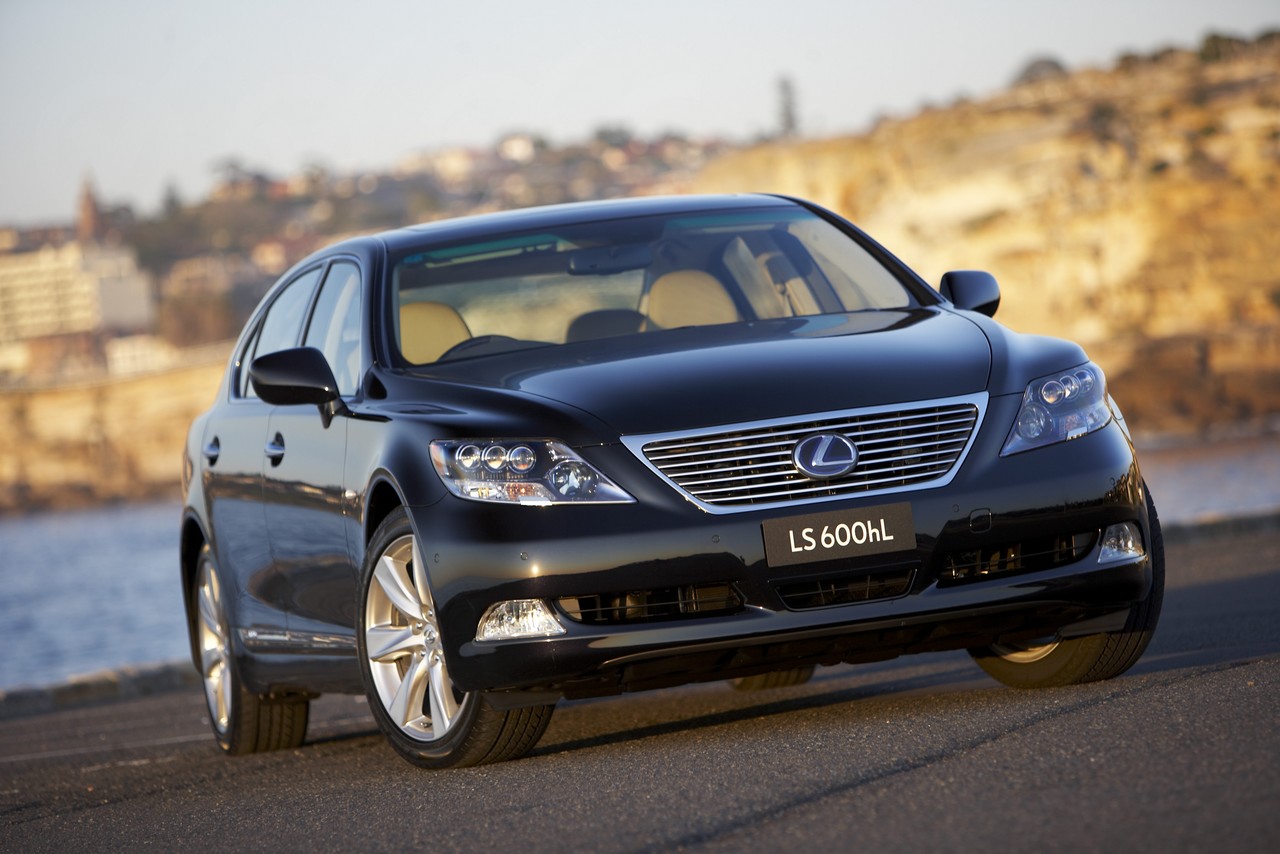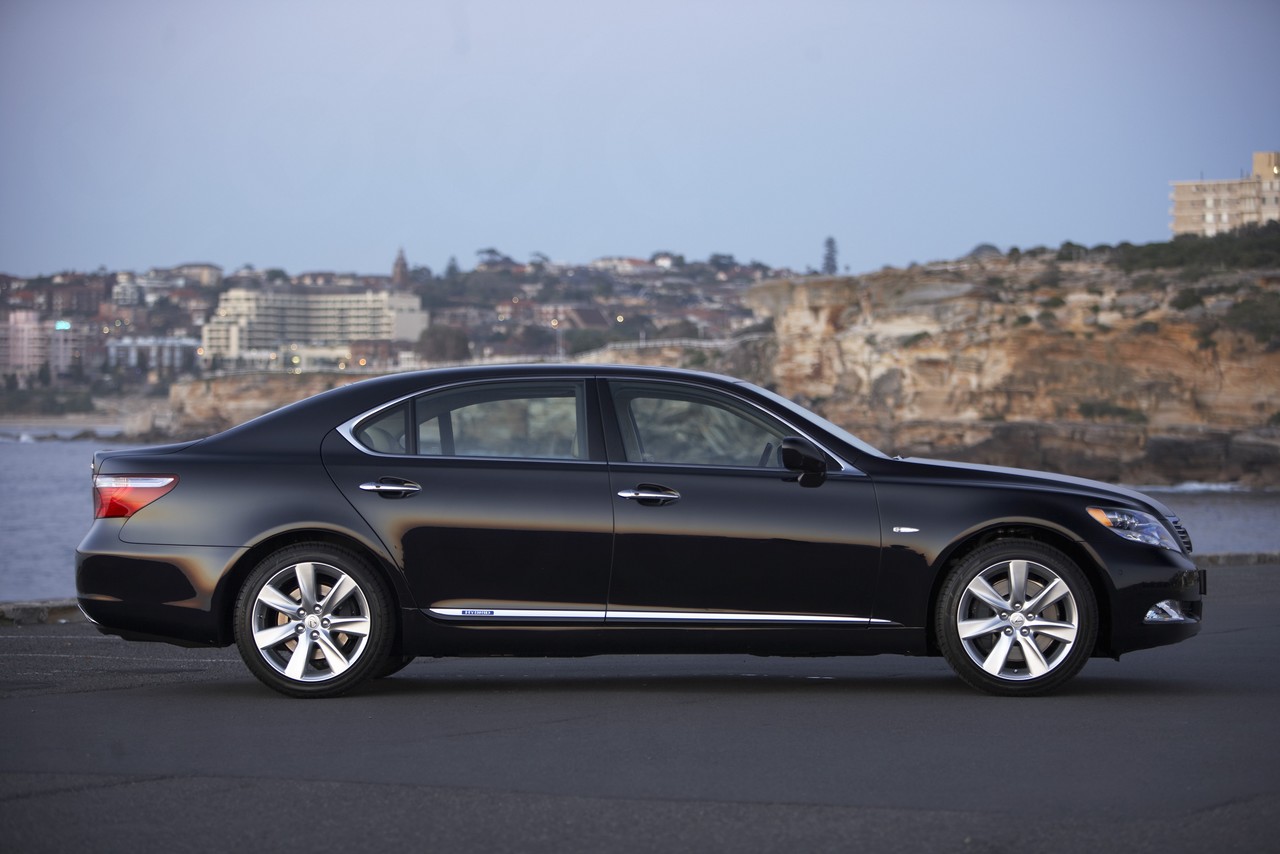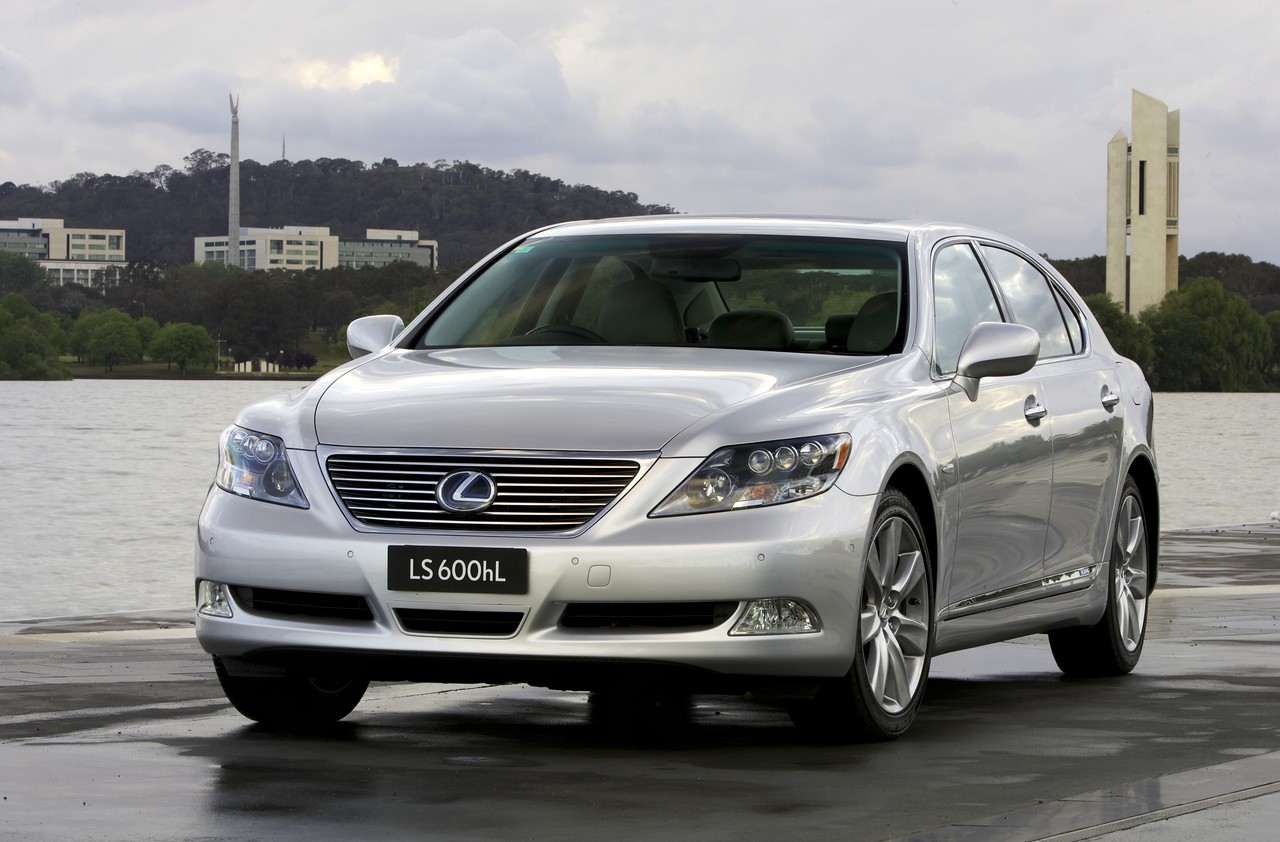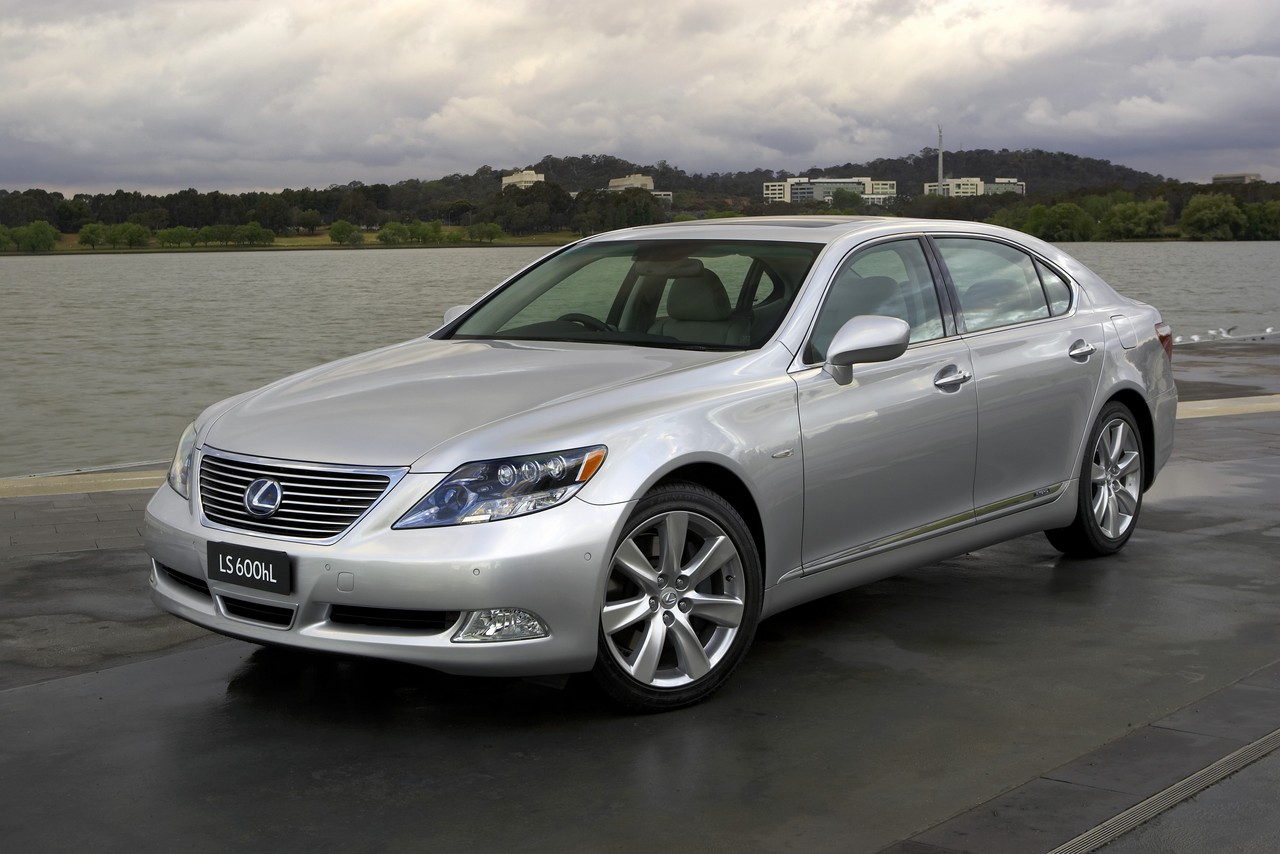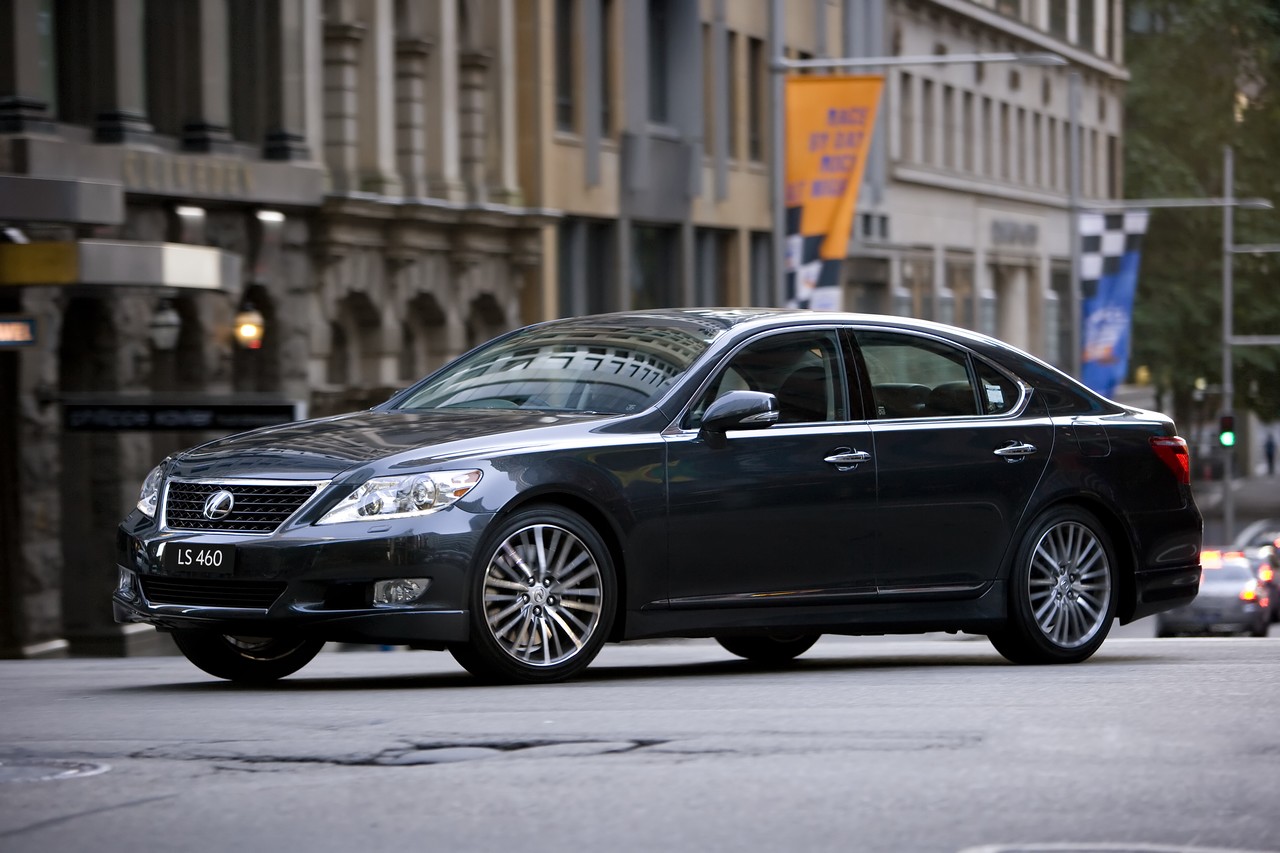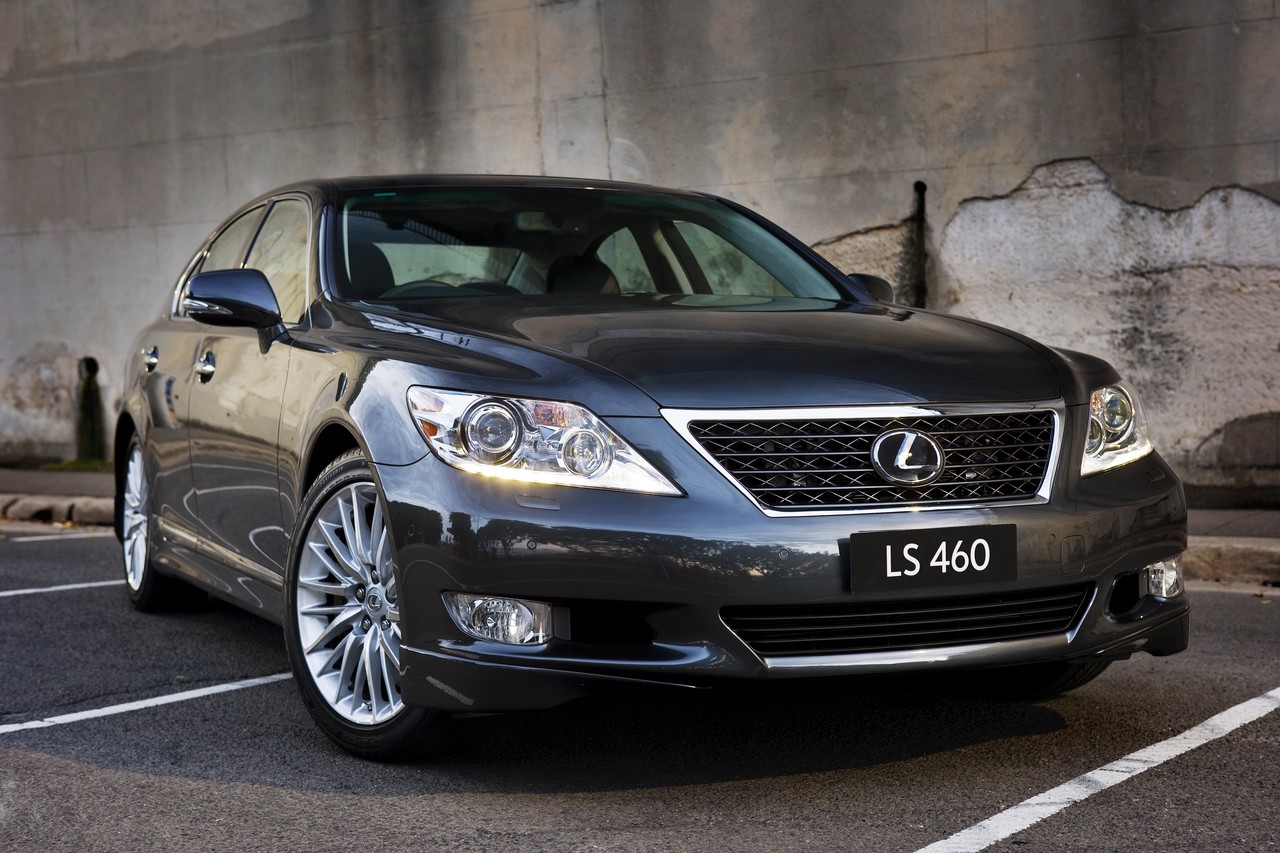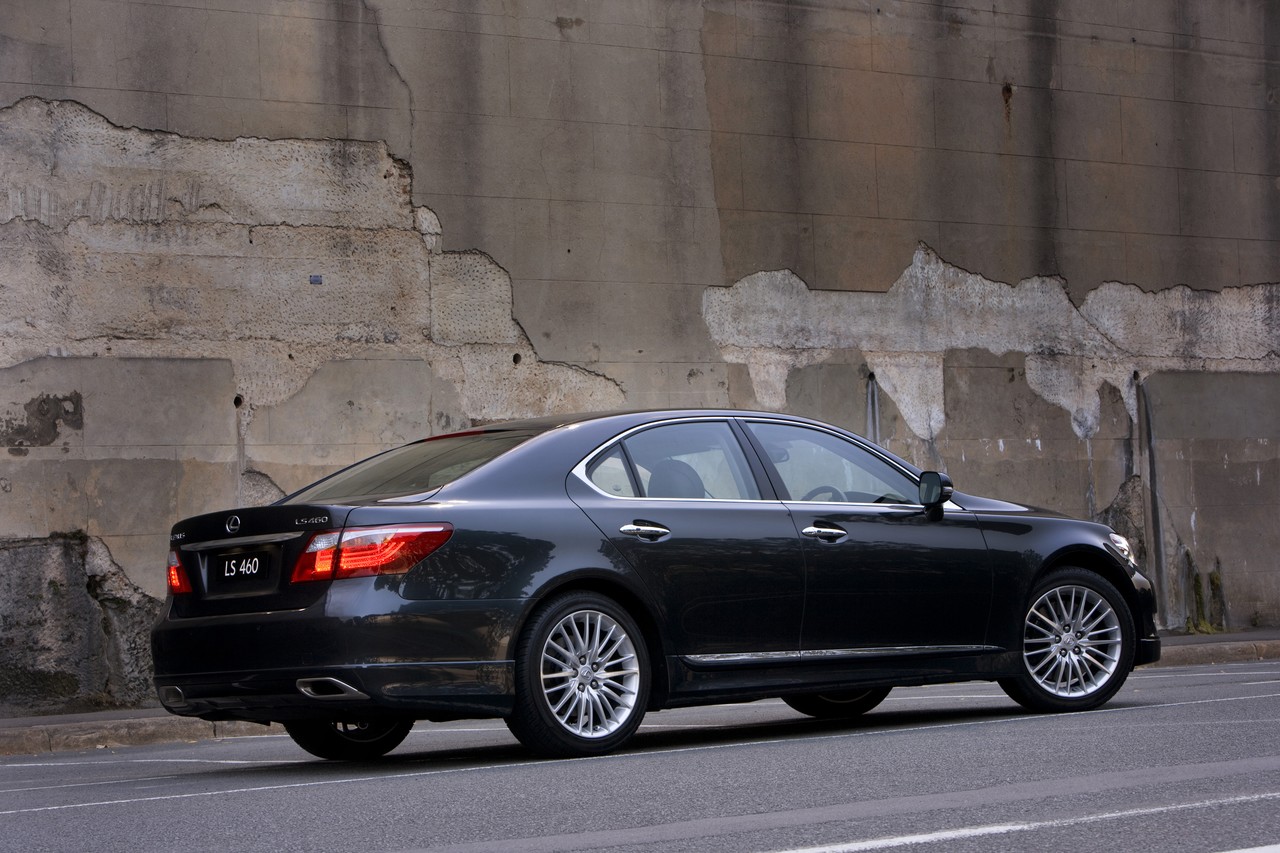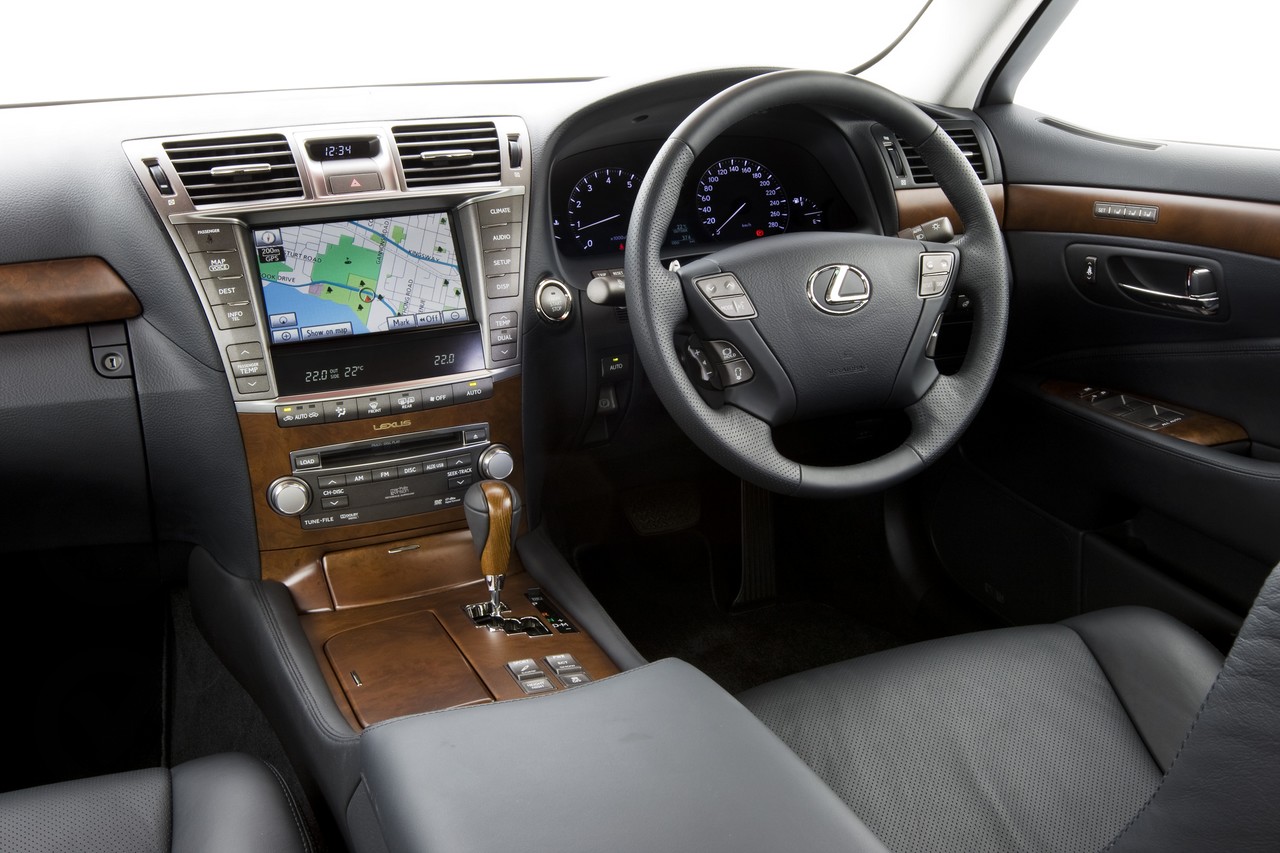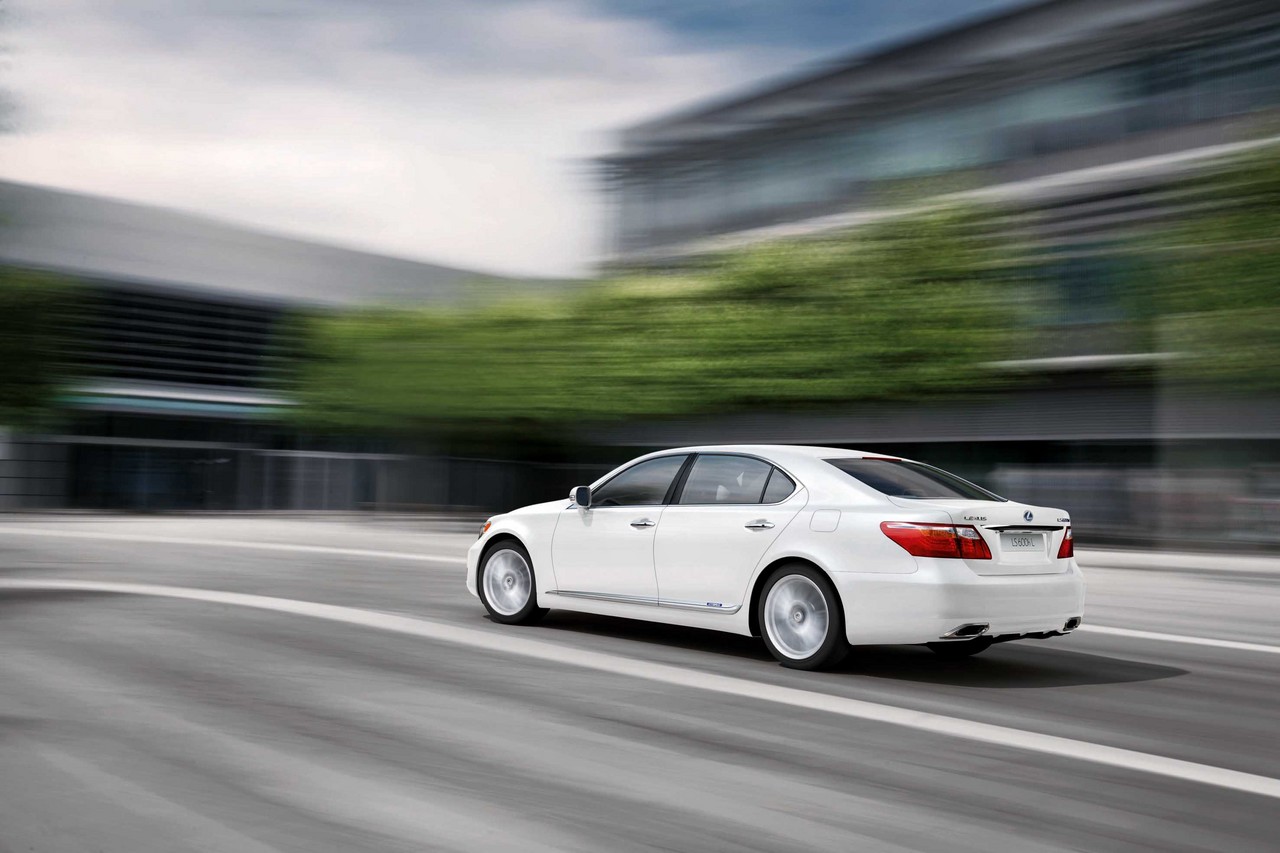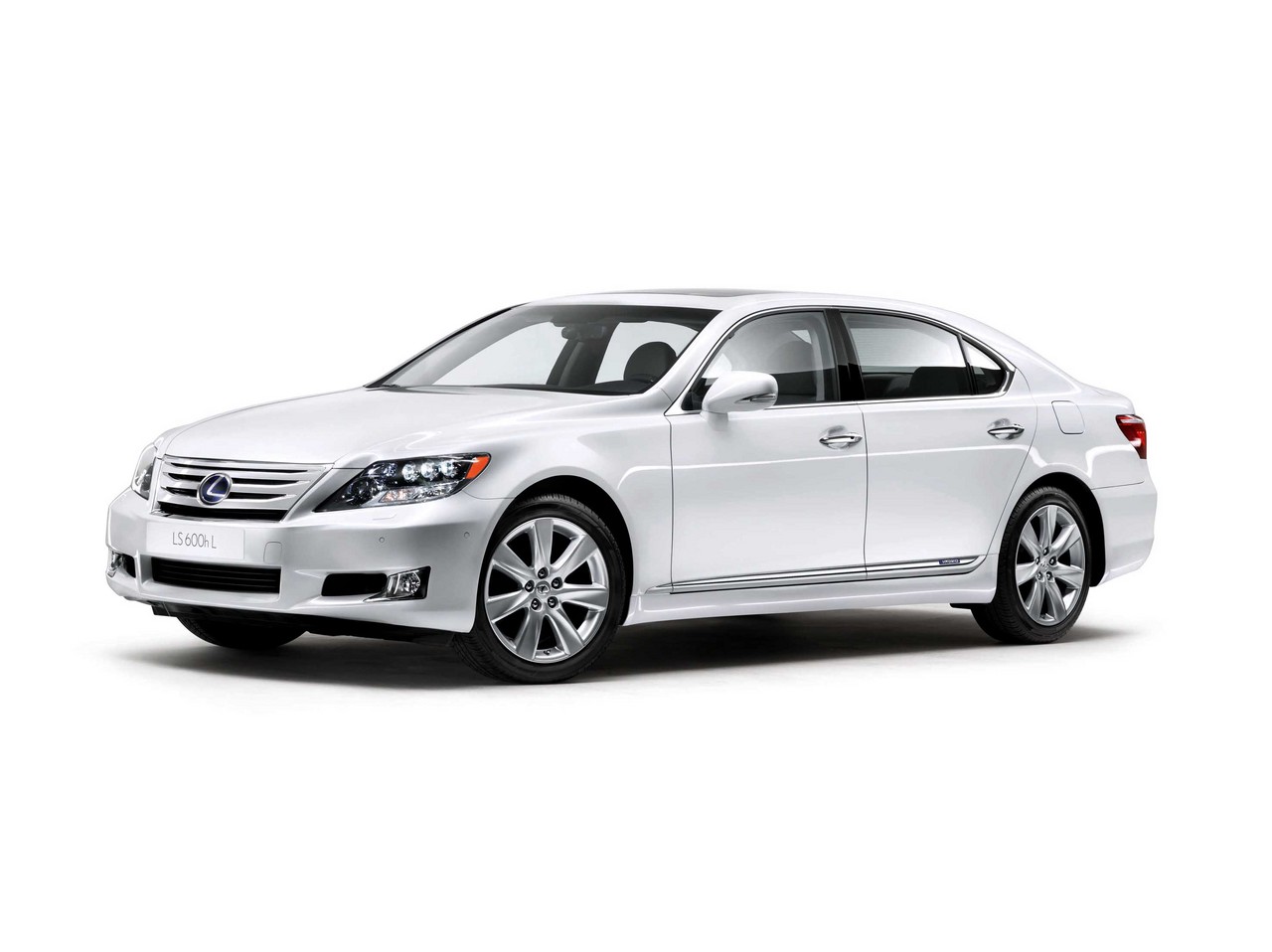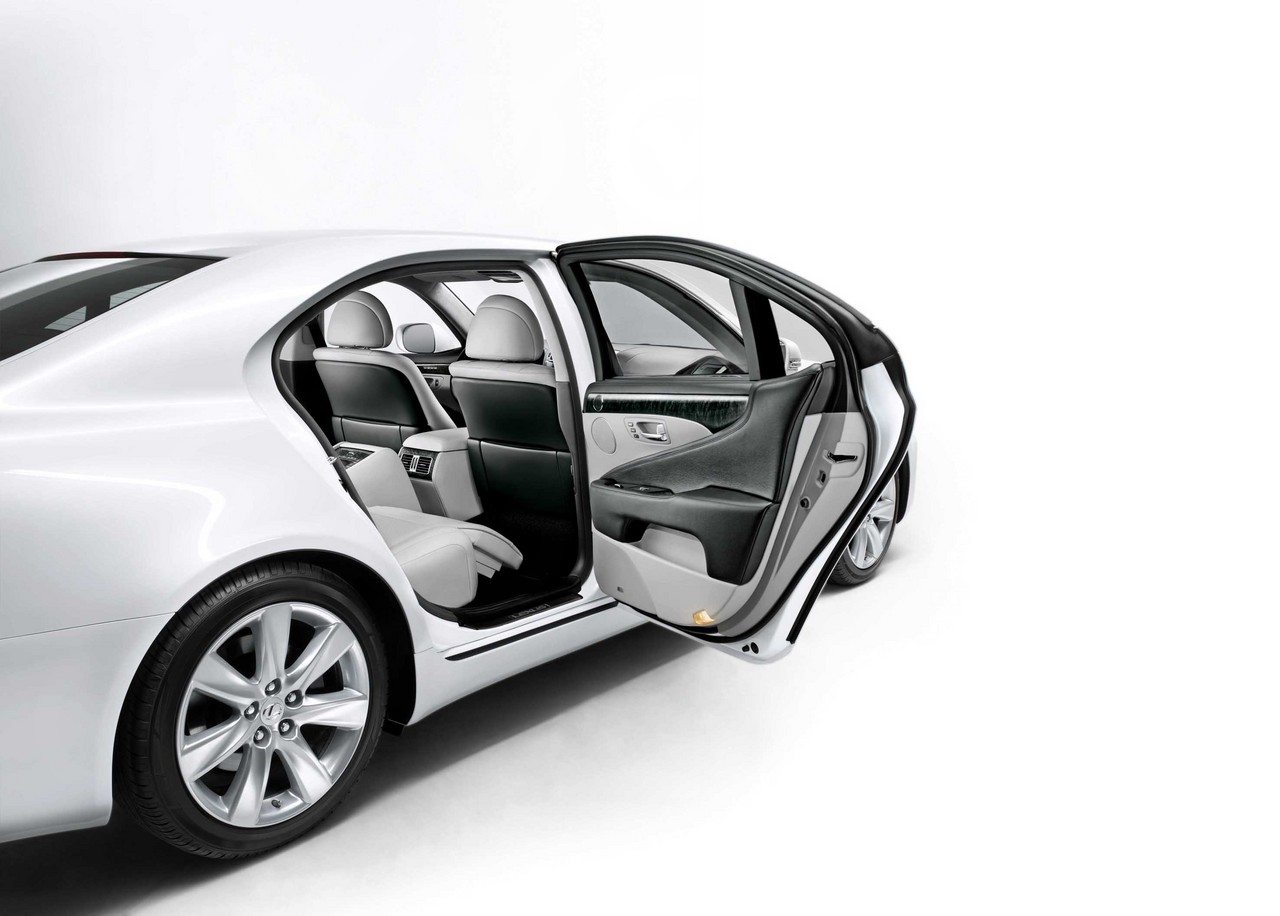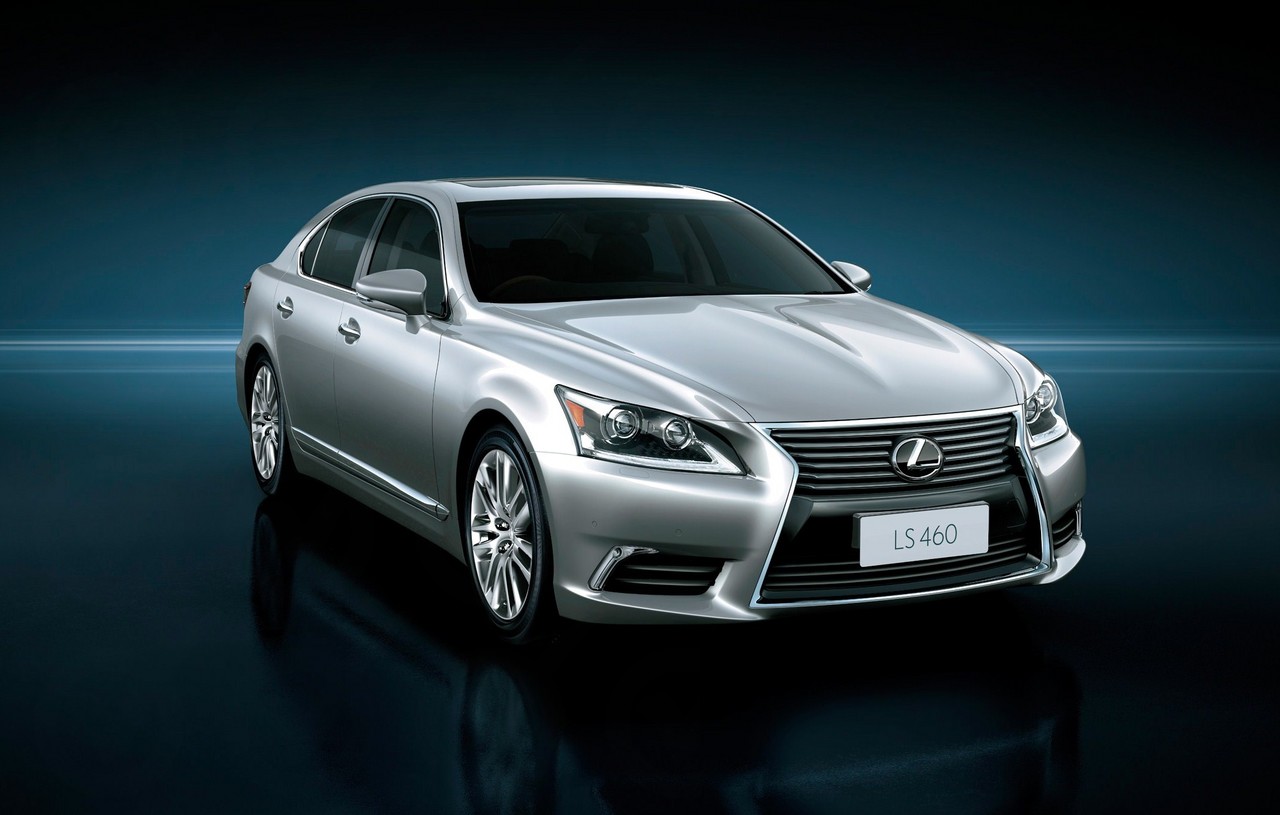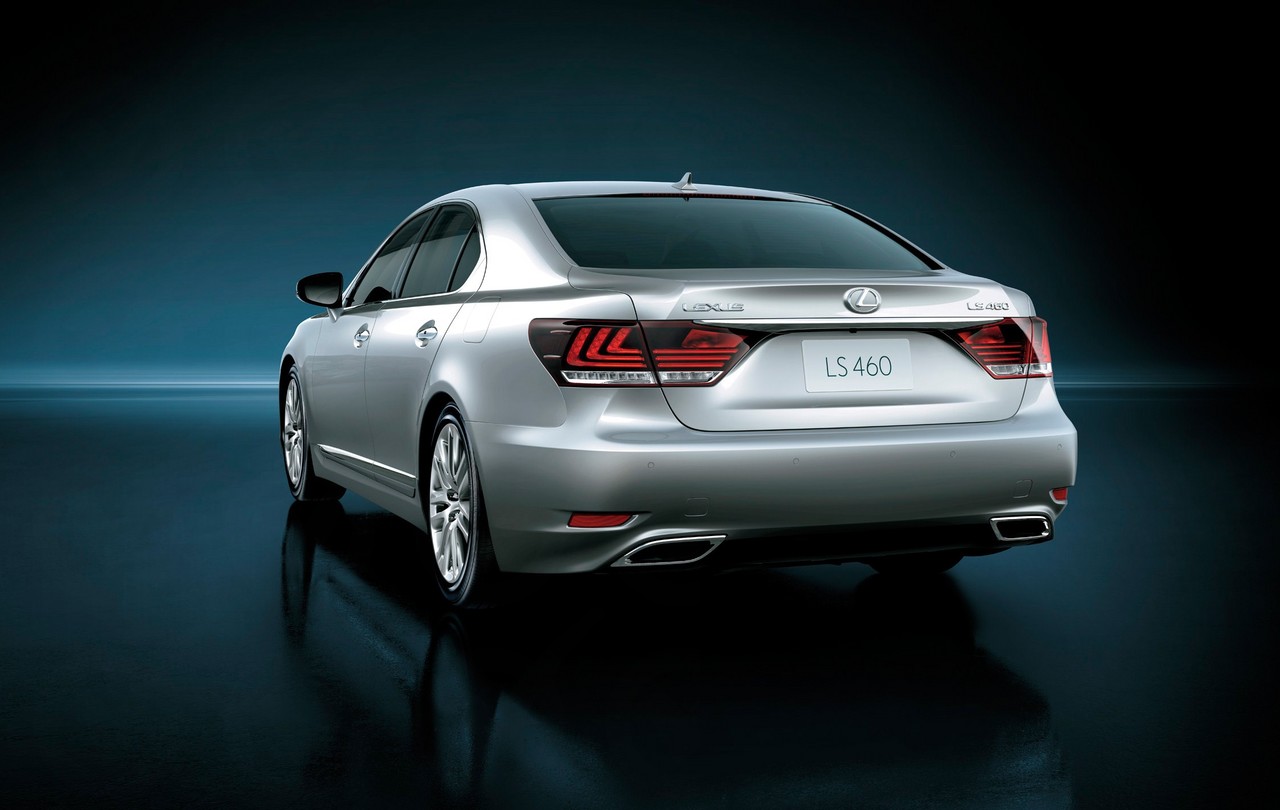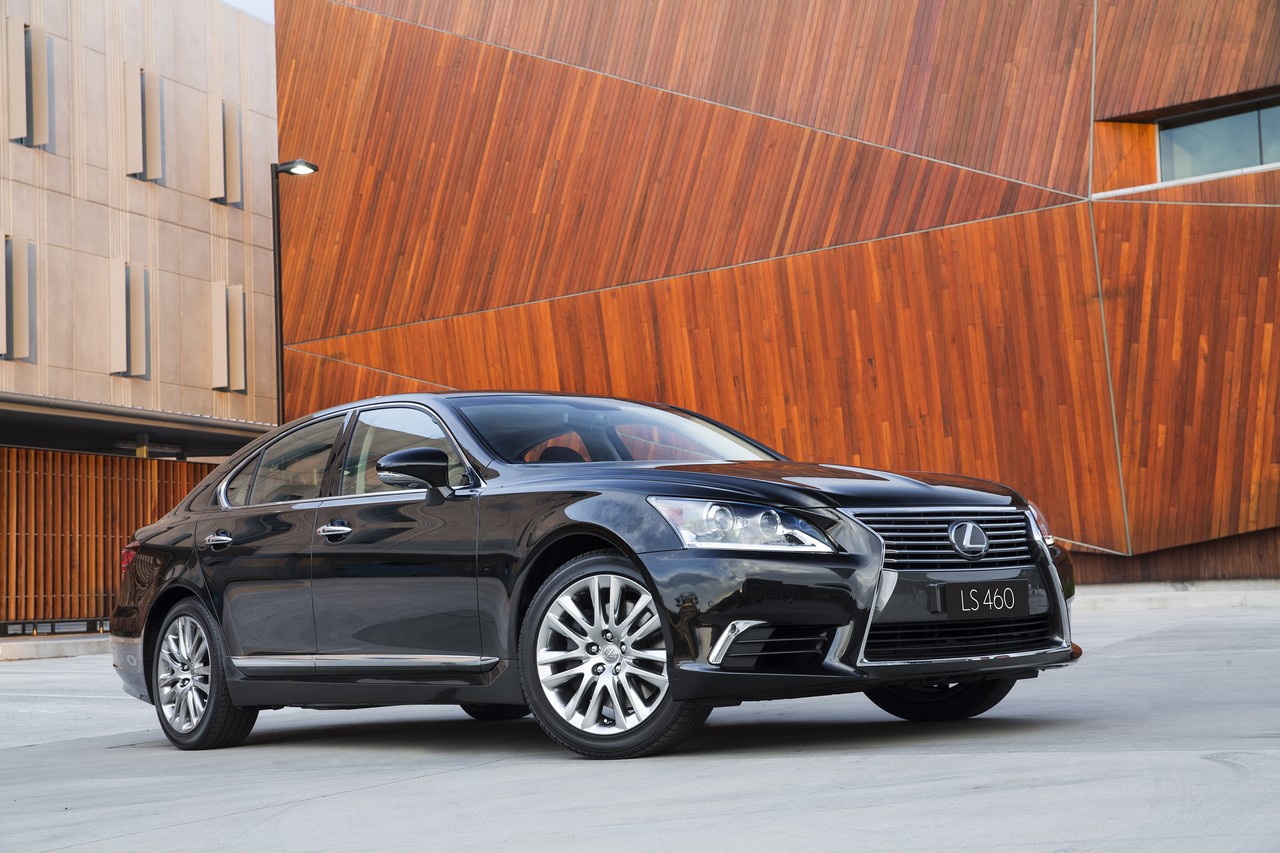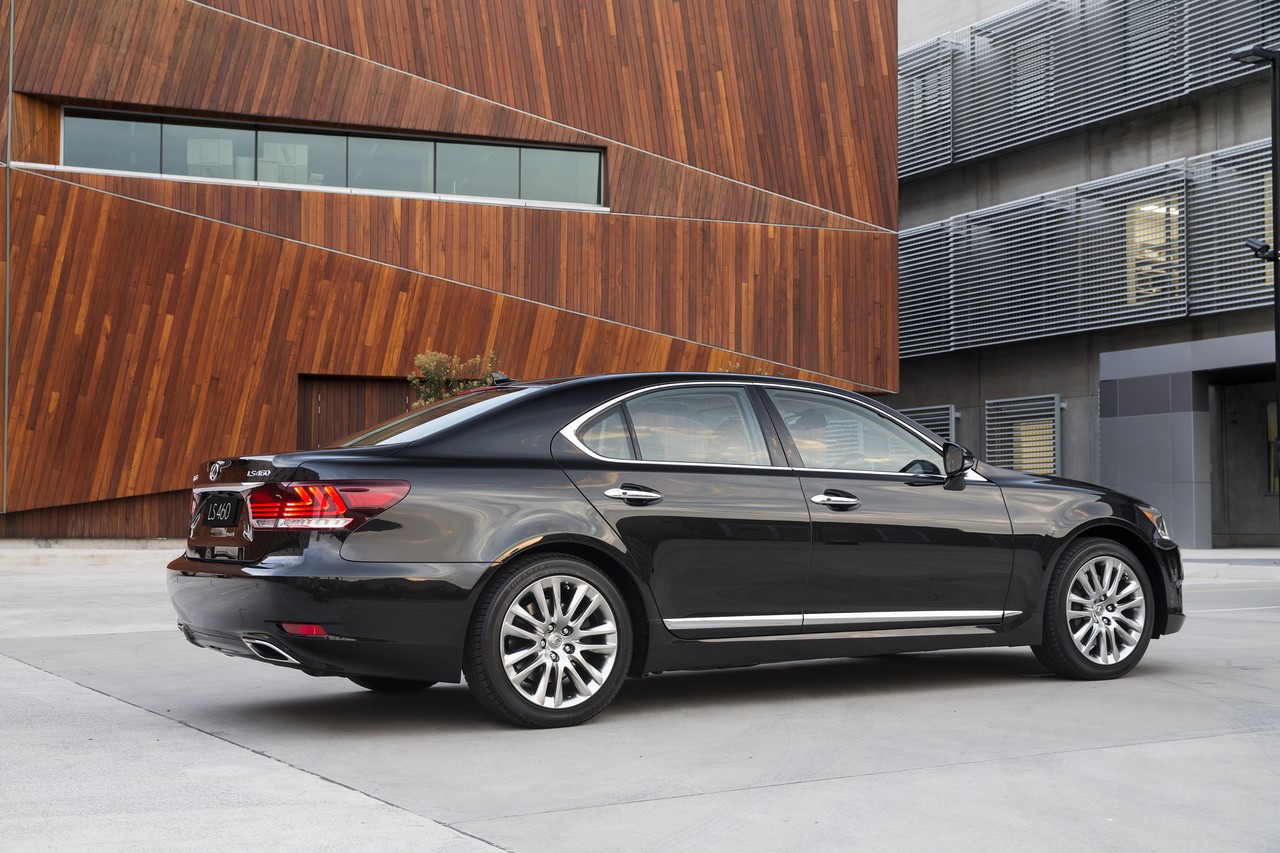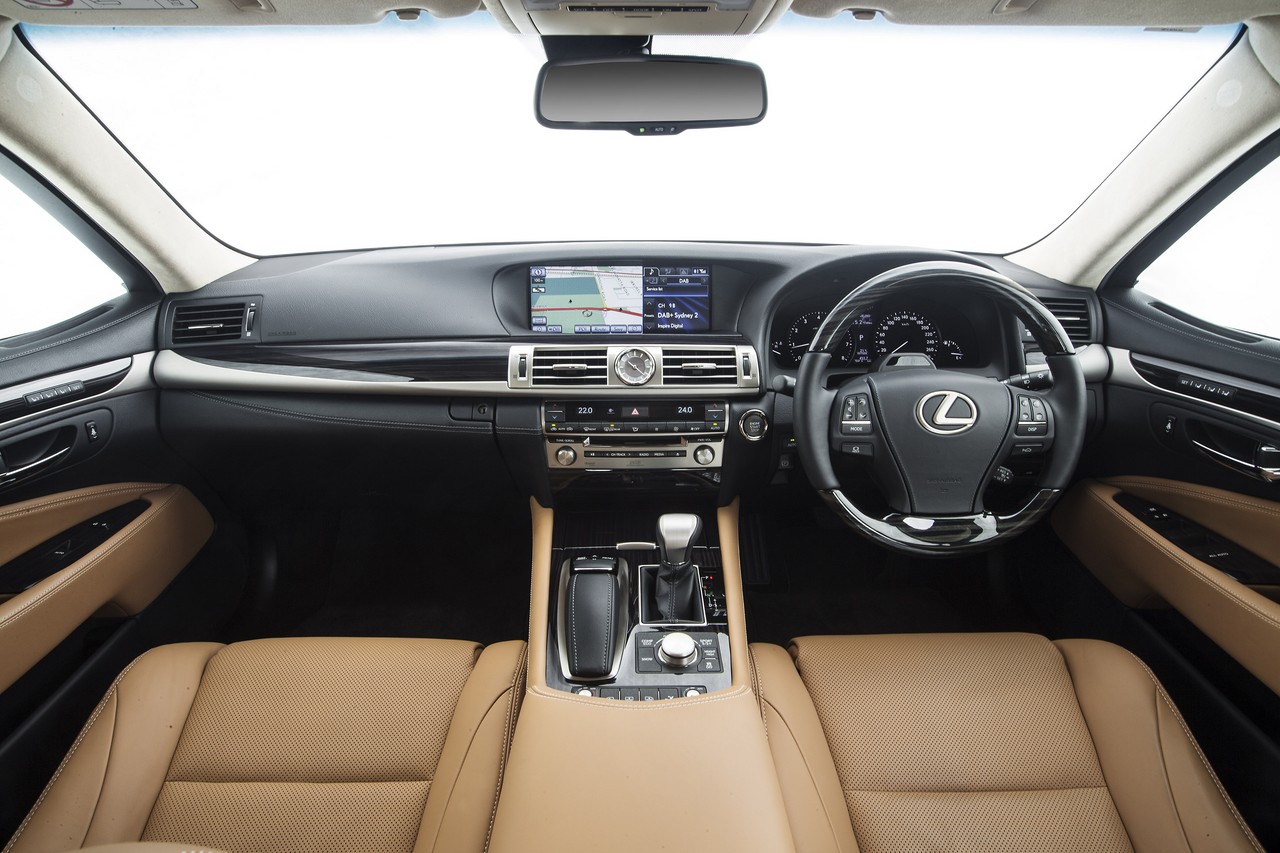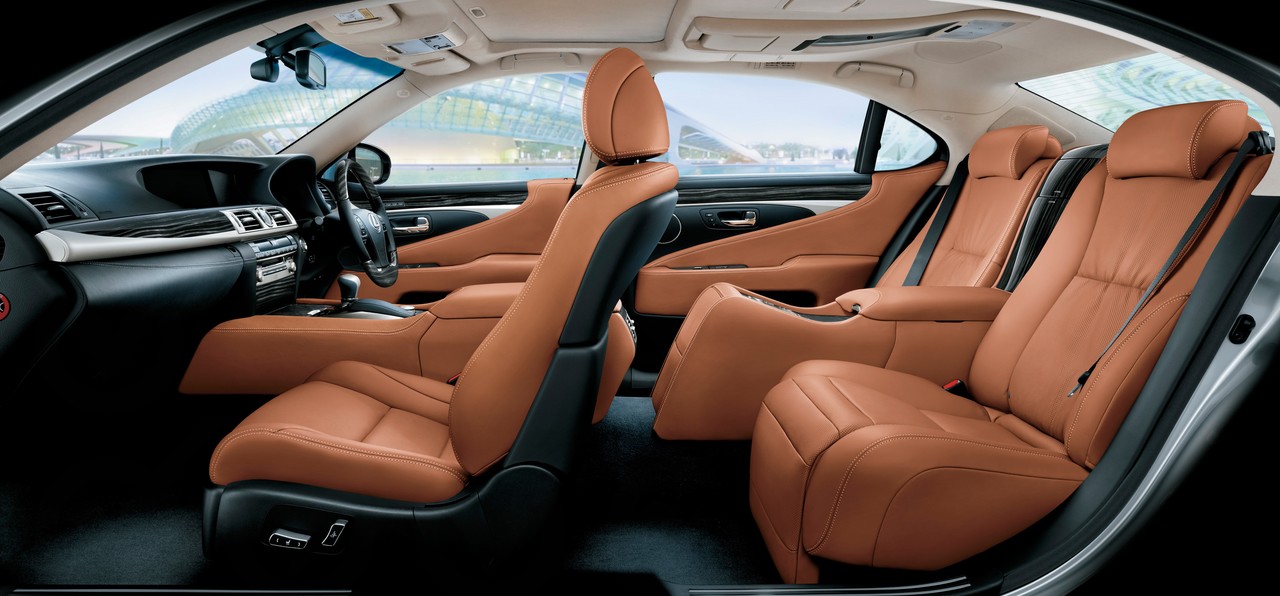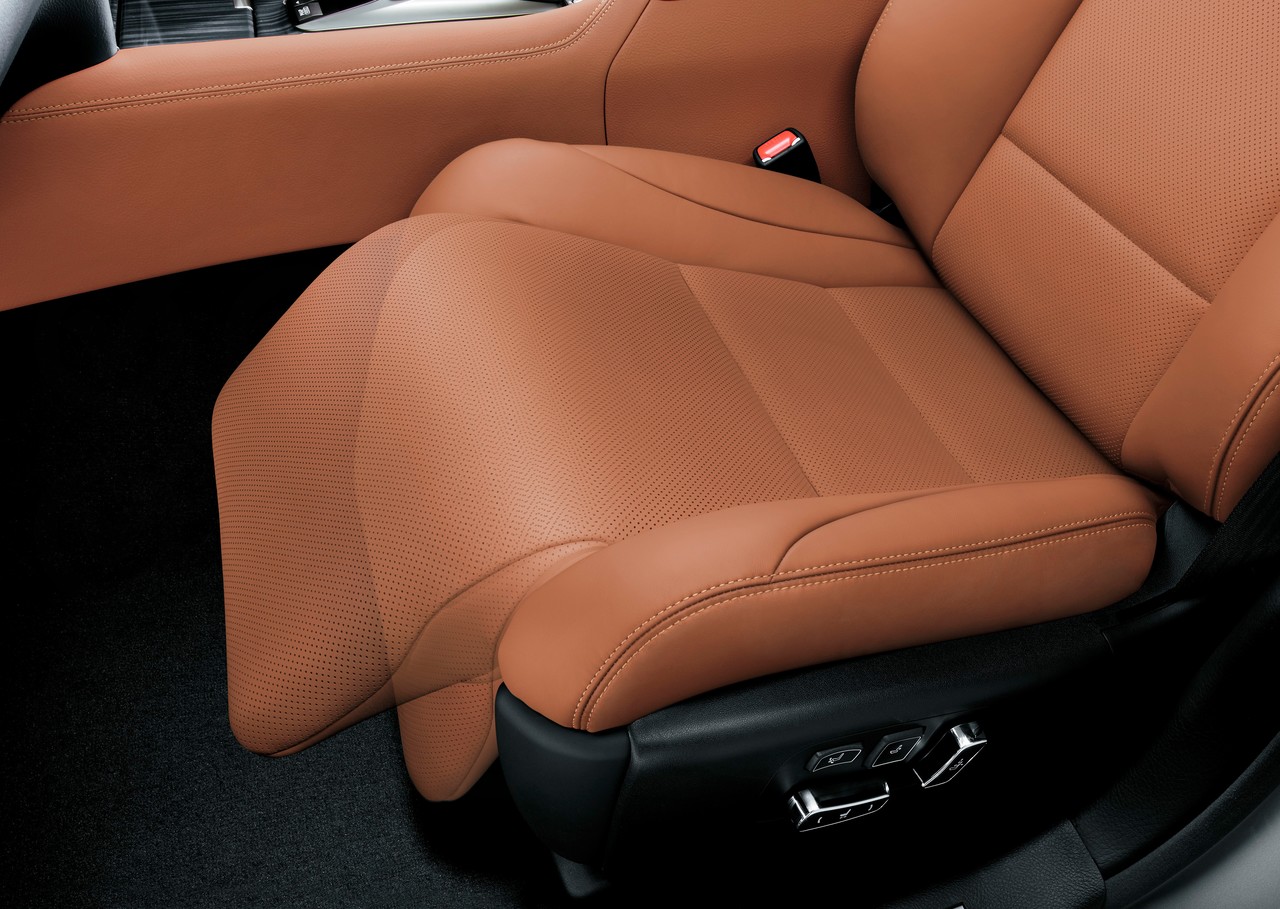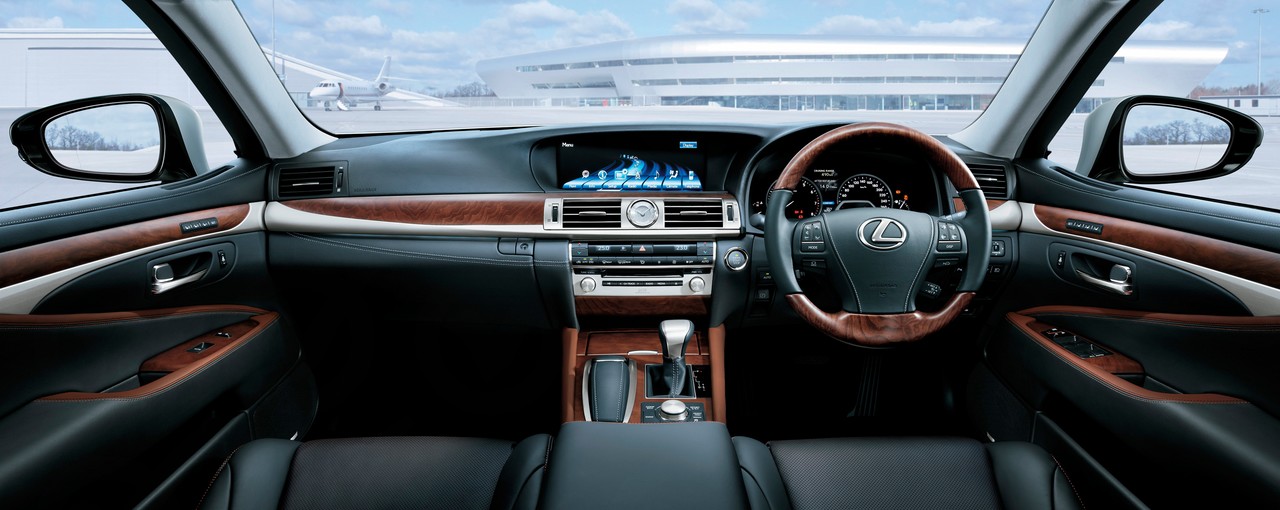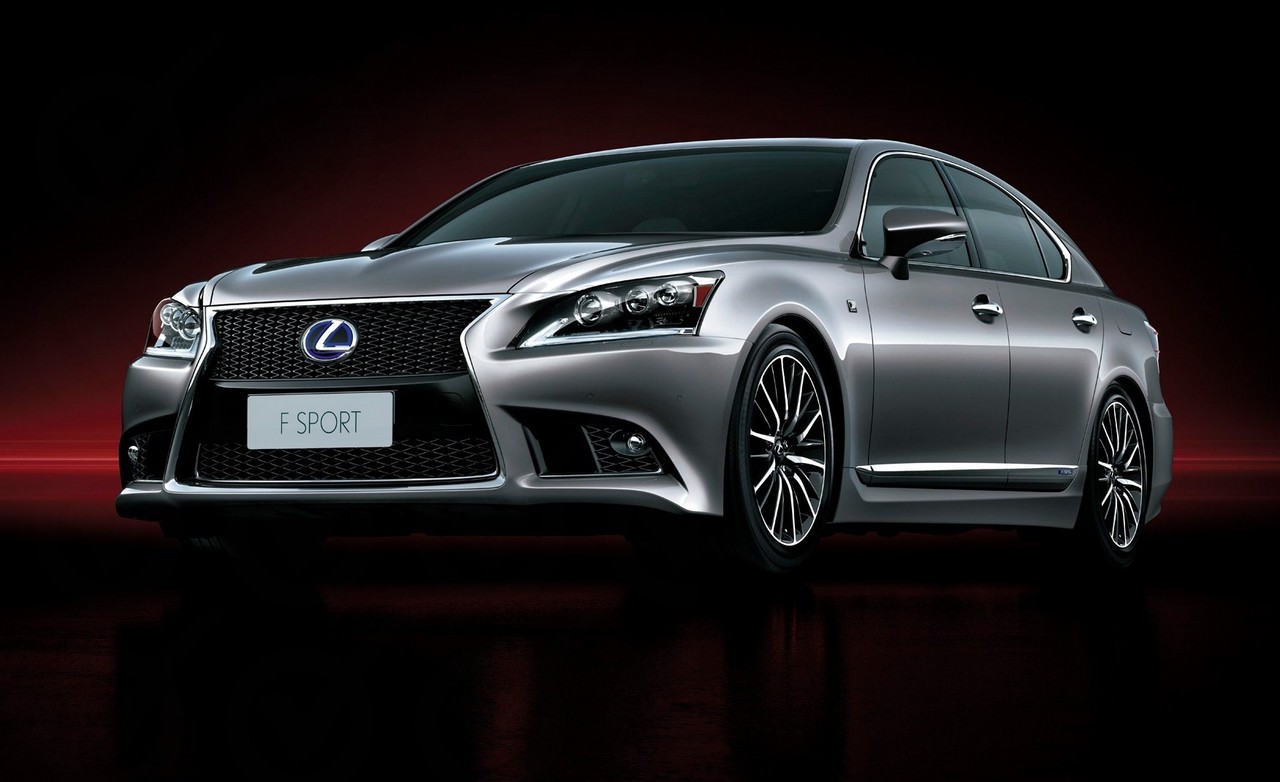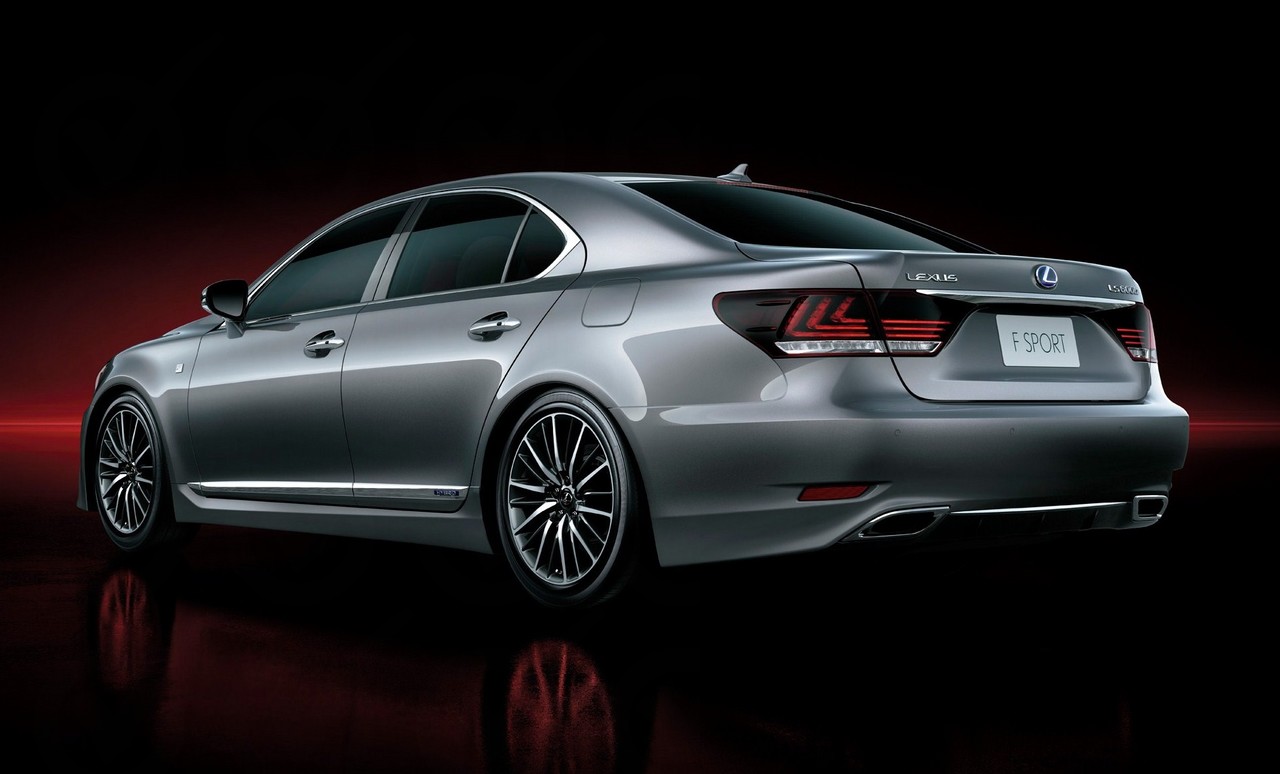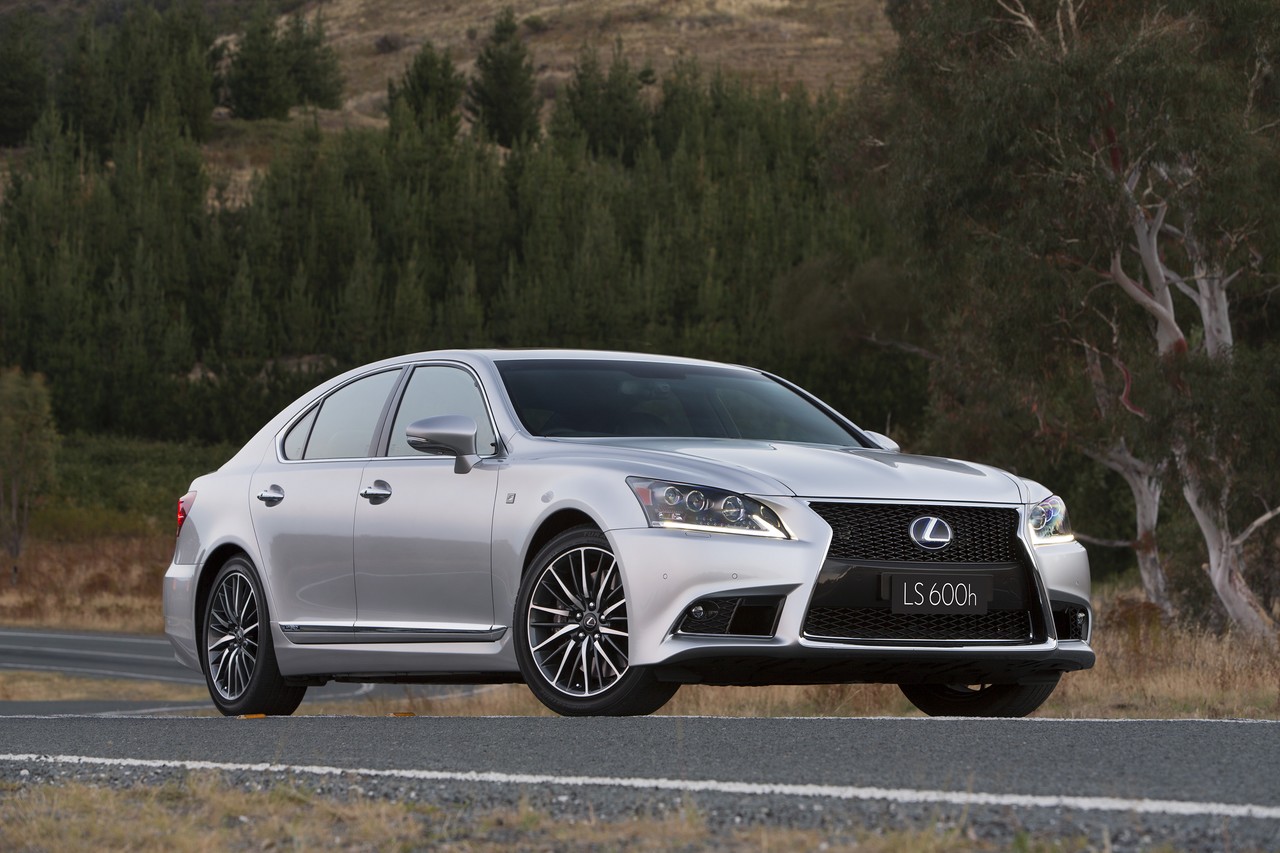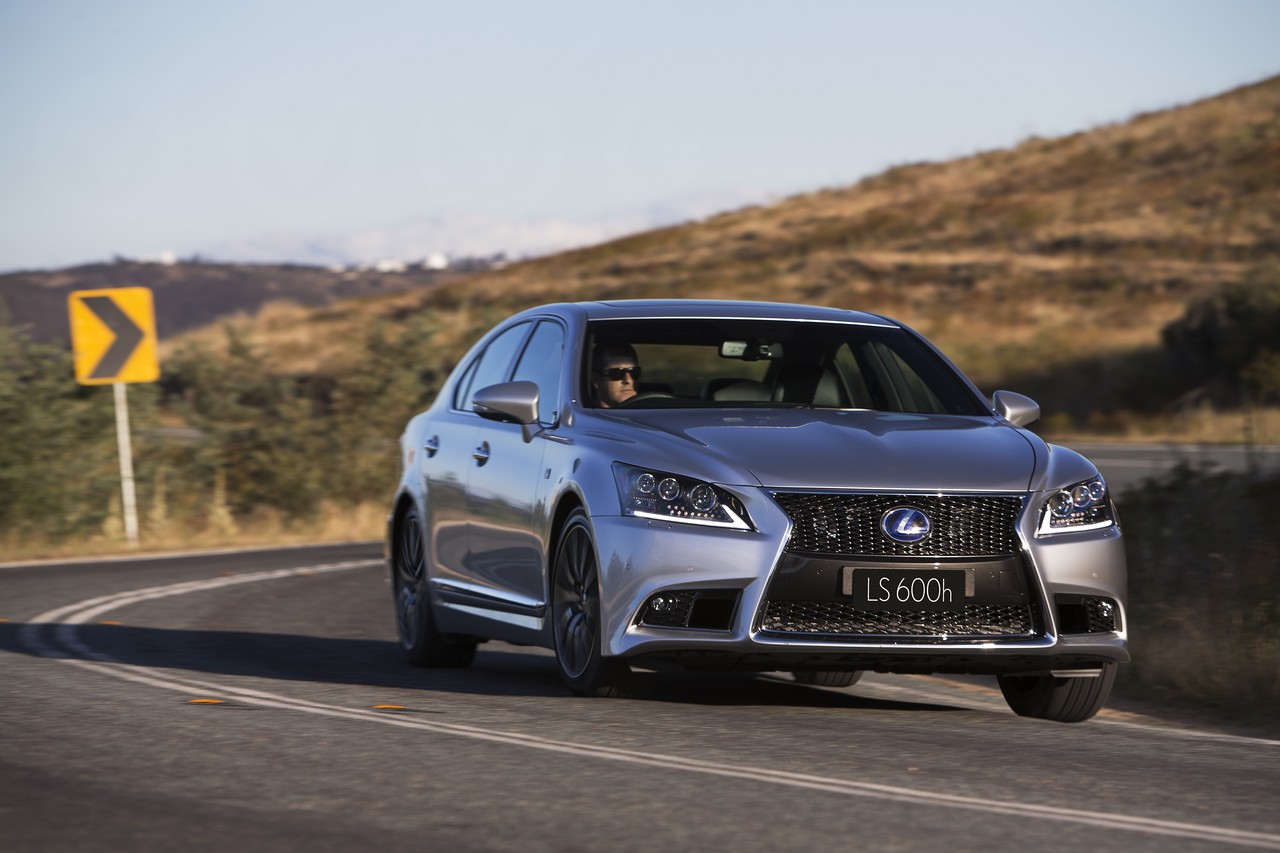
- For LS 460, refined 4.6-litre V8 engine
- For LS 600h, extraordinary hybrid powertrain
- Outstanding interior quality
- Supremely quiet cabin
- Comfortable seats
- Driving experience fails to engage the driver
- For LS 600h, weight blunts agility while steering is overly-assisted and slow around centre
- Easily confused navigation system
- Small boot
Review: Lexus XF40.I LS 460 and LS 600hL (2007-10)
Overview
Released in April 2007, the Lexus XF40 Series I (XF40.I) LS was a large, luxury sedan. Manufactured in Tahara, Japan, the Lexus XF40 LS range initially consisted of the LS 460 model which powered by a 4.6-litre V8 petrol engine that was mated to an eight-speed automatic transmission. The LS 600hL, however, followed in November 2007.
LS 460: 1UR-FSE engine
The 4.6-litre 1UR-FSE V8 engine had a die-cast aluminium block, aluminium heads, double overhead camshafts (per cylinder bank), four valves per cylinder, a twin injection fuel system which combined direct injection with traditional port injection (the latter for more precise air/fuel mixing under low and medium load conditions), variable intake and exhaust valve timing (‘Dual VVT-i’), VVT-iE camshaft timing (i.e. an electrically-operated actuator controlled intake camshaft timing, whereas exhaust camshaft timing used a conventional hydraulic actuator) and a compression ratio of 11.8:1.
LS 600hL powertrain
In November 2007, the LS range was expanded with the introduction of the hybrid LS 600hL, powered by a 5.0-litre 2UR-FSE V8 petrol engine – with direct injection and dual VVTi-E – and a 650 volt electric motor. The LS 600hL was fitted with a continuously variable transmission which also had eight pre-set ratios for sequential shifting. Compared to the LS 460, the LS 600hL was 120 mm longer (at 5150 mm) and had a 120 mm longer wheelbase (3090 mm).
The LS 600hL also had permanent four-wheel drive with a mechanical Torsen limited slip differential and default front:rear torque split of 40:60; this could vary, however, from 30:70 to 50:50 depending upon conditions.
Dimensions
Compared to the Lexus XF30 LS 430 , the XF40 was 25 mm longer (at 5030 mm), 45 mm wider (1875 mm), 25 mm lower (1465 mm) and had a 45 mm longer wheelbase (2970 mm).
Suspension and steering
The XF40 LS had multi-link front and rear suspension with Lexus Adaptive Variable Air Suspension (front and rear) and Vehicle Posture Control. Furthermore, the LS had an electric power steering system with variable gear ratios.
| Model | Drive | Engine | Trans. | Peak power | Peak torque |
|---|---|---|---|---|---|
| LS 460 | RWD | 4.6-litre petrol V8 (1UR-FSE) | 8sp auto | 280 kW at 6400 rpm | 493 Nm at 4100 rpm |
| LS 600hL | 4WD | 5.0-litre petrol V8 (2UR-FSE) | 8sp CVT | 290 kW at 6400 rpm | 520 Nm at 4000 rpm |
| 650V electric motor | 165 kW | 300 Nm | |||
| Combined | 327 kW | N/A | |||
Safety equipment
Standard safety equipment for the LS 460 and LS 600hL included dual front airbags, knee airbags for both front occupants, side airbags for front and rear occupants, full length curtain airbags (i.e. for front and rear occupants), ABS, electronic brake force distribution, brake assist, electronic stability control, traction control and front seatbelts with pretensioners and load limiters. Where fitted, the Ottoman rear seat also featured an anti-submarining airbag.
The LS was fitted with Lexus’ Pre-Collision System which prepared the seatbelts, brake assist and suspension when an emergency situation was detected. The LS was also fitted with Lexus’ Vehicle Dynamics Integrated Management (VDIM) system which enabled intuitive counter-steering – without driver input – to prevent the driver from losing control.
Brakes
The LS 460 and LS 600hL had 357 mm by 34 mm spiral-fin ventilated front brake discs with four-piston calipers and 335 mm by 22 mm spiral-fin ventilated rear discs with two piston calipers.
Features: LS 460 and LS 600hL
Standard features for the LS 460 included 19-inch alloy wheels, a nineteen speaker Mark Levinson surround sound system with six-stack CD player, MP3/WMA compatibility and auxiliary input, four-zone climate control air conditioning, satellite navigation, DVD player and retractable rear 23 cm LCD colour screen, semi-aniline premium leather, power adjustable front and rear seats with memory settings, heated front and rear seats, adaptive cruise control, front fog lights, directional bi-xenon headlights, automatic headlights, rain-sensing wipers, front and rear parking sensors, Bluetooth mobile phone connectivity with voice recognition, 40/20/40–split powered rear seats, remote central locking with proximity key, power mirrors and windows, a power adjustable steering wheel (height and reach) with memory settings, power sunroof, power rear blinds, self-closing doors, tinted windows, a trip computer, an alarm and immobiliser.
Beyond this, the LS 600hL added body temperature sensors, Intelligent Park Assist (self-parking), LED low beam headlights and full leather dashboard. The LS 600hL was also available with a reclining rear passenger side ottoman seat.
Related links
Review: Lexus XF40.II LS (2009-12)
Overview
Released in December 2009, the XF40 Series II (XF40.II) LS range initially consisted of the LS 460 – also available in a Sports variant – with the LS 600hL following in March 2010.
| Model | Drive | Engine | Trans. | Peak power | Peak torque |
|---|---|---|---|---|---|
| LS 460, LS 460 Sports |
RWD | 4.6-litre petrol V8 (1UR-FSE) | 8sp auto | 280 kW at 6400 rpm | 493 Nm at 4100 rpm |
| LS 600hL | 4WD | 5.0-litre petrol V8 (2UR-FSE) | 8sp CVT | 290 kW at 6400 rpm | 520 Nm at 4000 rpm |
| 650V electric motor | 165 kW | 300 Nm | |||
| Combined | 327 kW | N/A | |||
LS 460 and LS460 Sports
Changes for the LS 460 included stiffer air suspension with upgraded stabiliser bars and revised transmission with clutchless manual mode. The LS 460 Sports was also fitted with 380 mm by 36 mm front brake discs with six-piston calipers and 334 mm rear discs with two-piston calipers).
The LS 460 Sports also featured 20-spoke 19-inch forged alloy wheels, more supportive seats and steering wheel mounted gearshift paddles. Inside, there was a redesigned centre cluster with new switchgear and chrome highlights, ‘ECO’ air conditioning mode, slimmer rear seat entertainment screen and USB sound system input integrated with the satellite navigation touch screen. Compared to its predecessor, the XF40.II LS 460 could be identified by its new front and rear bumpers, grille, mirror mounted turn indicators, head and tail lamps, and LED running lights at the base of the headlamps.
LS 600hL
Released in March 2010, the XF40.II LS 600hL introduced active front seat head restraints, Euro V emissions compliance, an additional 40 litres of boot space due to repackaging of the hybrid system’s battery and ‘Self-Restoring’ paint. Visually, the XF40.II LS 600hL was distinguished by its four-bar grille, redesigned air intakes and fog lamps, door mirrors with twin LED indicators and puddle lamps and lower bumper with vertical fins.
Related links
Review: Lexus XF40.III LS (2013-17)
Overview
Released in February 2013, the XF40 Series III (XF40.II) LS introduced a revised range as the LS 460 Sport was replaced by the LS 460 F Sport, a standard wheelbase LS 600h F Sport was introduced and the LS 600hL was solely available by special order. Significantly, the XF40.III LS adopted laser screw welding, adhesive body bonding and structural bracing techniques, contributing to a 60 per cent increase in torsional rigidity. Other strengthening measures included engine bay member joints, a larger transmission tunnel brace, larger partition panel reinforcements and seat brackets.
In addition to its stiffer structure, the XF40.III LS sought to improve ride and steering characteristics dynamics through:
- Four-wheel interlock control for the Adaptive Variable air Suspension (AVS) system which suppressed the three-direction vibration of roll, pitch and heave at all four wheels;
- Revised steering hardware and increased bracing which improved steering accuracy, feel and turn-in response;
- Recalibrated electro power steering (EPS); and,
- A new Drive Mode Select system which provided selectable ‘Eco’, ‘Comfort’, ‘Normal’, ‘Sport’ and ‘Sport+’ modes.
The F Sport variants were fitted with sport air suspension (which lowered the body by 10 mm) and limited-slip Torsen rear differentials, while the LS 600h F Sport was also fitted with active stabiliser bars to minimise body roll.
Identification
Visually, the XF40.III LS could be identified by their spindle grilles, L-shaped daytime running lights, bi-xenon headlights for LS 460 models, LED high and low beam headlights for the 600hL F Sport, LED tail-lights and resculpted boot lids; the F Sport variants were differentiated by their more aggressive front masks and painted 19-inch alloy wheels.
Inside, the XF40.III LS had a new dashboard with a stripped wood (‘Shimamoku’) finish, a 12.3-inch LCD and a second-generation Lexus Remote Touch (LRT) controller. The interior also featured an Advanced Illumination System (AIS) with ‘Champagne White’ interior lamps and dynamic LED instrument panel lighting.
| Model | Variants | Drive | Engine | Trans. | Peak power | Peak torque |
|---|---|---|---|---|---|---|
| LS 460 | Sports Luxury, F Sport |
RWD | 4.6-litre petrol V8 (1UR-FSE) | 8sp auto | 280 kW at 6400 rpm | 493 Nm at 4100 rpm |
| LS 600h
LS 600hL |
F Sport
N/A |
4WD | 5.0-litre petrol V8 (2UR-FSE) | 8sp CVT | 290 kW at 6400 rpm | 520 Nm at 4000 rpm |
| 650V electric motor | 165 kW | 300 Nm | ||||
| Combined | 327 kW | N/A | ||||
Safety equipment
Compared to its XF40.II predecessor, safety equipment for the XF40.III LS was extended to include:
- A Driver Alert Monitor which monitored the driver’s head movements via two near infra-red LEDs and a CCD camera. If the driver turned their head away from the road ahead for a few seconds – and the system anticipated a collision – the system would sound a warning alarm. If the collision threat persisted, the brakes would be applied automatically and, if the driver did not respond immediately, all Pre-Collision Safety System functions would engage; and,
- A new blind spot monitor that operated once the vehicle exceeded 16 km/h.
In October 2014, standard safety equipment was extended to include a Rear Cross Traffic Alert (RCTA) system which could detect approaching vehicles as the Lexus LS was reversing.
Features
Compared to the XF40.II LS 460 Sport, the LS 460 F Sport was further equipped with an upgraded Mark Levinson audio system with Bluetooth audio streaming and digital radio (DAB+), all-speed cruise control, embossed front sports seats and automatic high beam headlights. The LS 460 F Sport also features Lexus’ Sports Program Direct Shift (or SPDS) with automatic throttle blipping for downshifts.
The LS 460 Sport Luxury was further equipped with Lexus’ Climate Concierge System which:
- Combined the front and rear seat climate control systems and the steering wheel rim heater via a network of thirteen sensors to maximise occupant comfort; and,
- Nanoe air purifying technology which released 20 to 50 nm-diameter Nanoe particles – negatively charged ions wrapped in water molecules – into the cabin to purify the air, eliminate odours and deodorise surfaces.
Additional features for the LS 460 Sport Luxury included an Ottoman front seat, heated rear seats and a rear Blu-ray player. The LS 460 Sports Luxury was also fitted with 19-inch alloy wheels which had hollow rims to reduce rim resonance and therefore cabin noise.
October 2014 update
In October 2014, body stiffness was improved through the introduction of higher rigidity glass and new adhesives. Furthermore, new LED interior dome lights and Lexus’ ‘Enform’ connected mobility system were introduced; the latter included SD card-based navigation (which could alert drivers to speed and red light cameras, and school zones) and dual USB ports.
Related links
- Press Kit: Lexus XF40.III LS (November 2012)
- Lexus Australia: Lexus LS 460
- Lexus Australia: Lexus LS 600h
- Wikipedia.org: Lexus XF40 LS
